I wasn't totally unsuccessful in terms of record shots.
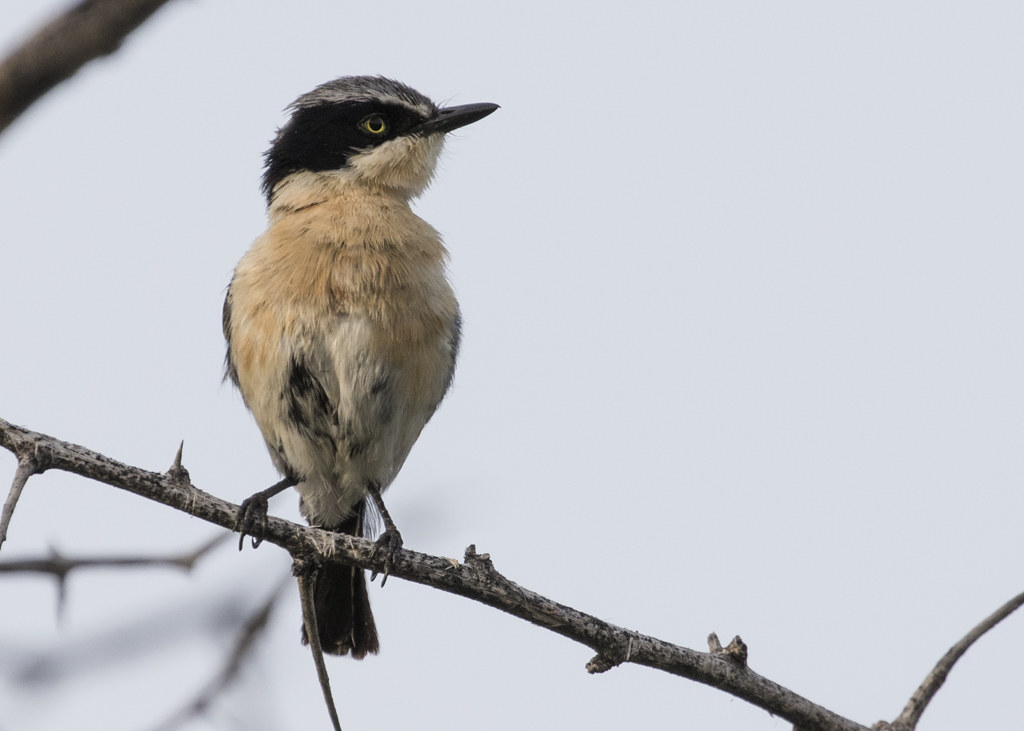
The Pririt Batis and the Southern Grey-headed Sparrow were both new species to me.
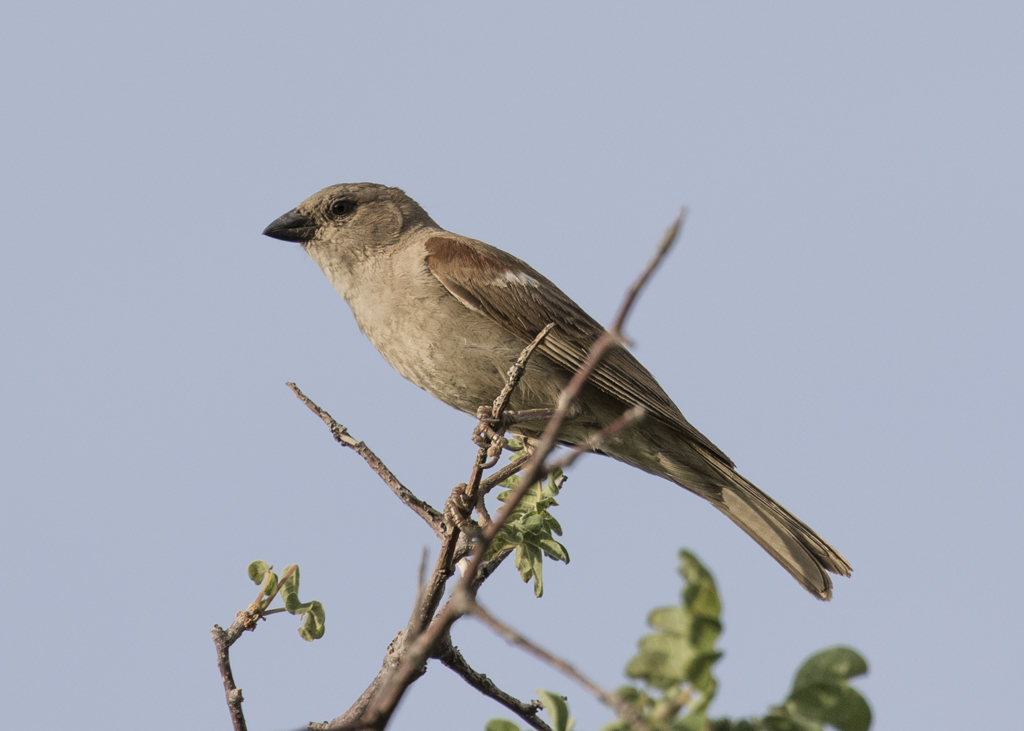
I also decided that I'd better takes some shots of the Southern Masked Weaver.
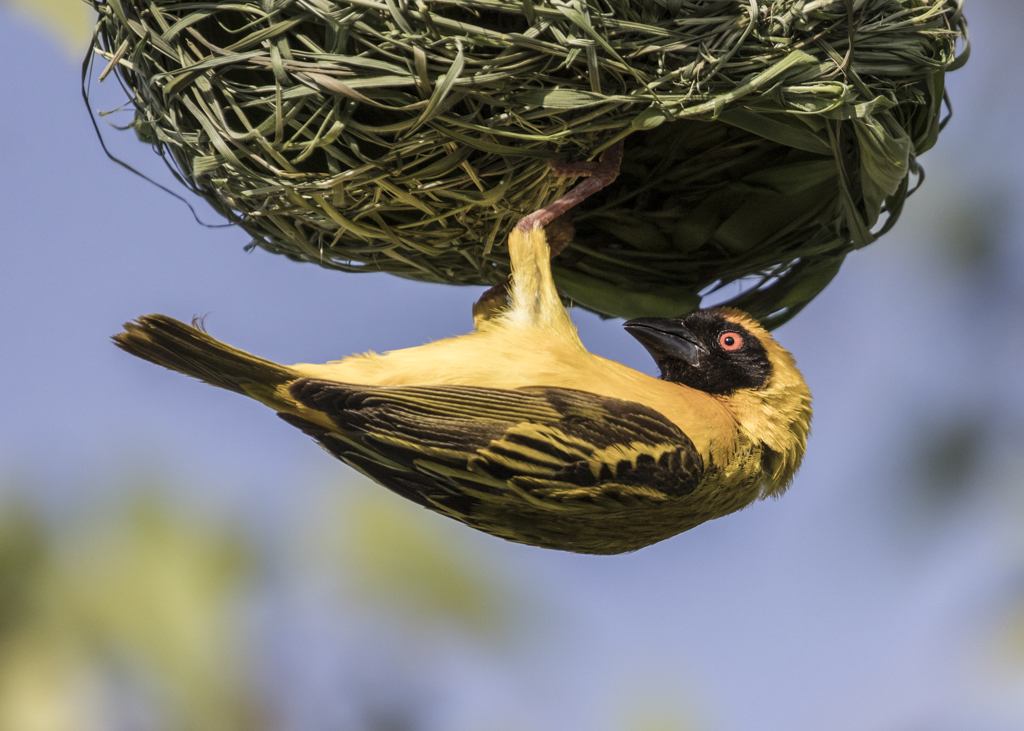
This was one of many that was nest building and I had had lots of opportunities in the previous couple of days but, as so often happens, when something is so incredibly common, as is this species, you tend to ignore them. The danger is you get home and realise you never got around to taking any shots at all!
Anyway, the previous day's weather had been wall to wall sun. Although much of it was spent travelling Claire had at last had some R&R by the swimming pool which she deserved having done all the driving so far. Even I had taken the time for a quick dip too!
Sadly however, the morning greeted us as being dull and damp as it had it appeared rained during the night.
My mind was made up, I was heading in to the Etosha NP. I was itching to get in there, and with the weather looking as it did Claire decided it was the best option for her too.
The park entrance, The Anderson Gate is actually only about 1Km from Etosha Village so you arrive there in minutes. On arrival you fill in a form with your details and then take it to the reception area in your chosen camp to pay the fees. In the case of Anderson Gate, the nearest camp is Okaukuejo ( and one which's name I never can pronounce!) which is 30 kms away.
Tip. Make sure the form is filled in and signed by the people on the gate, I heard one person being told they had to go back and get it signed which seemed a bit extreme.
Anyway to avoid having to make that journey everyday I applied for entry for the next 3 days. Originally I had asked for 9 days but as we were staying in different camps both inside and outside the park, they told me to re apply after 3 days when we were beginning our stay inside the park. Why I don't know but you don't argue with officialdom, especially as a new arrival.
With the form filled in however, we were free to go and could remain inside the park until just before sunset. Certainly no need to go straight to the camp to pay the fee until later in the day and the nice thing about Anderson Gate is you can turn off the main tarmac road leading to Okaukuejo Camp almost immediately on entering the park and this we decided to do, taking the road eastwards towards the Gemsbokvlakte water hole.
It was still quite early, there was a heavy dew on the grass and I was very excited at our prospects of at last seeing some notable sights! Driving incredibly slowly we almost inched our way through the first 15 minutes. We passed a couple of distant Oryx and a Springbok but our first photo opportunity came in the unexpected shape of a Mongoose. At first I shouted to Claire "Stoat!" as it had the same colour and profile from some distance.
To this day I'm not sure what it is, but it's not a Stoat. They don't exist in Africa.
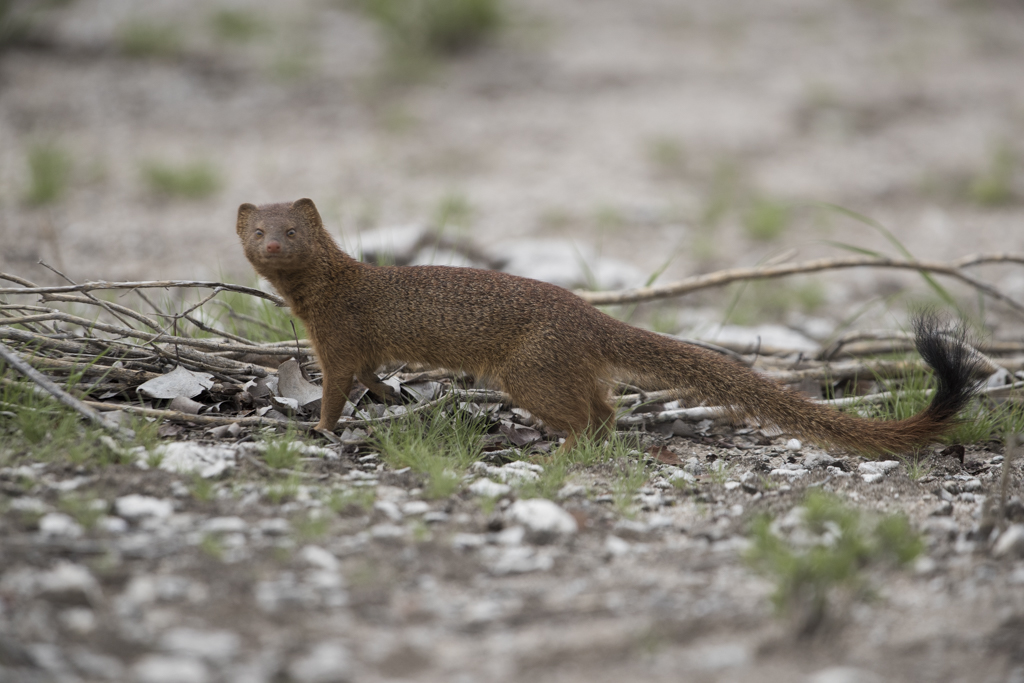
We came to the conclusion it was a Slender Mongoose but I'm open to suggestions to the contrary.
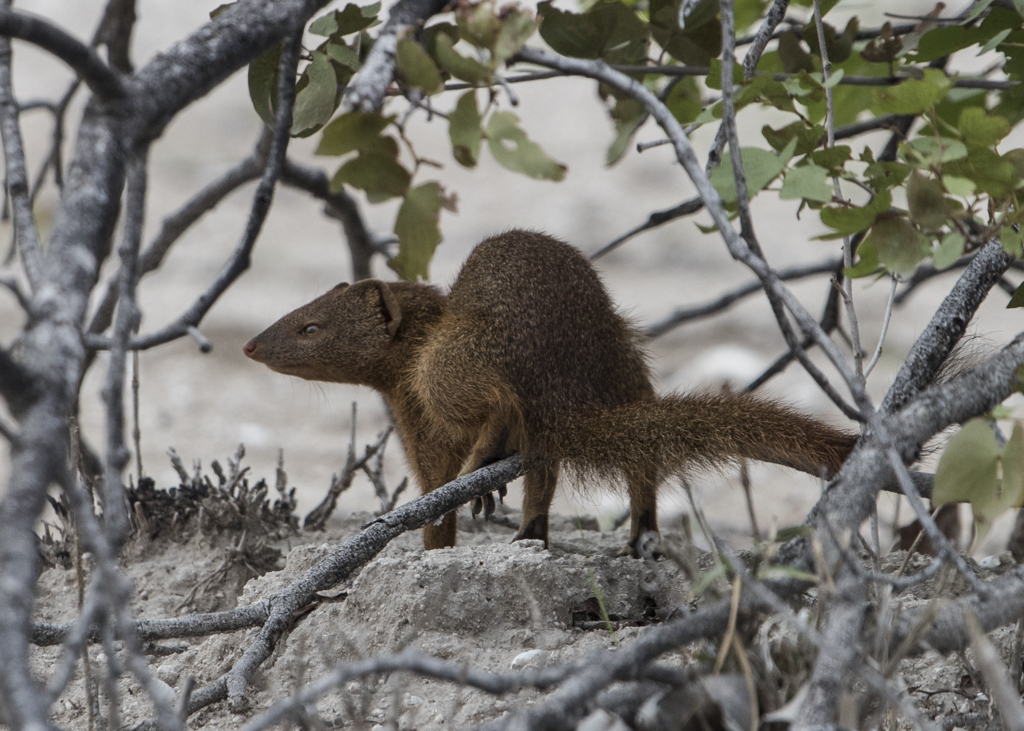
Had we been driving faster we may well not have seen the mongoose ( the only sighting of our trip of this species) but it soon became apparent that the distances within the park are not inconsiderable so we did increase our speed to around 25-30 kph. ( The speed limit is 60kph) because the distance to the first waterhole alone was 27 kms.
I'm not sure what drew our attention to stop , I think it was this Kori Bustard
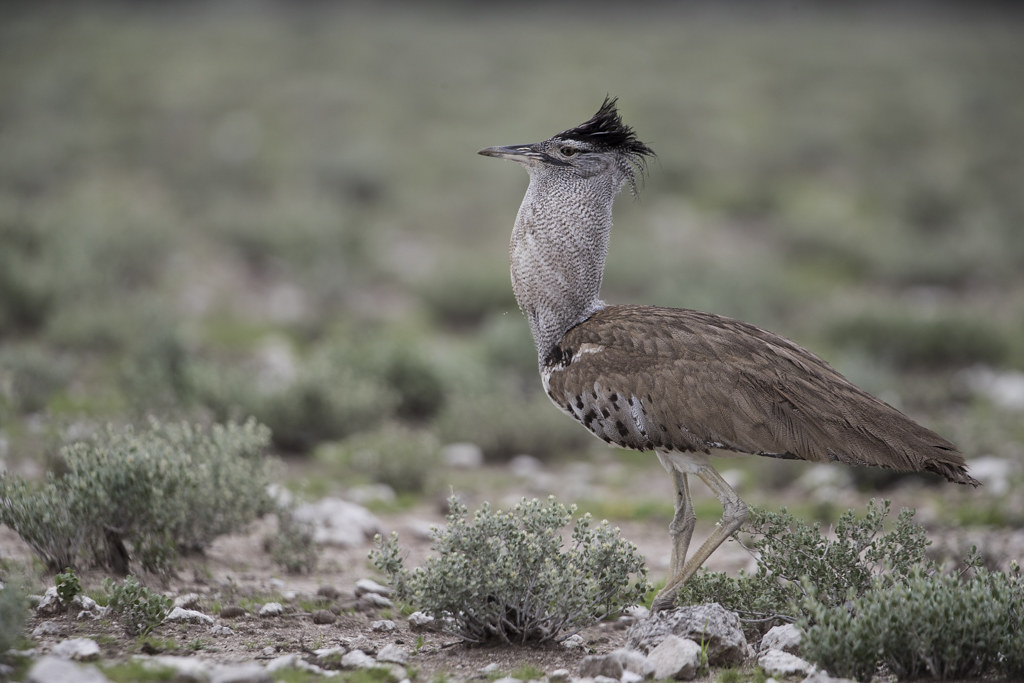
but whilst we were parked Claire spotted something in the distance.
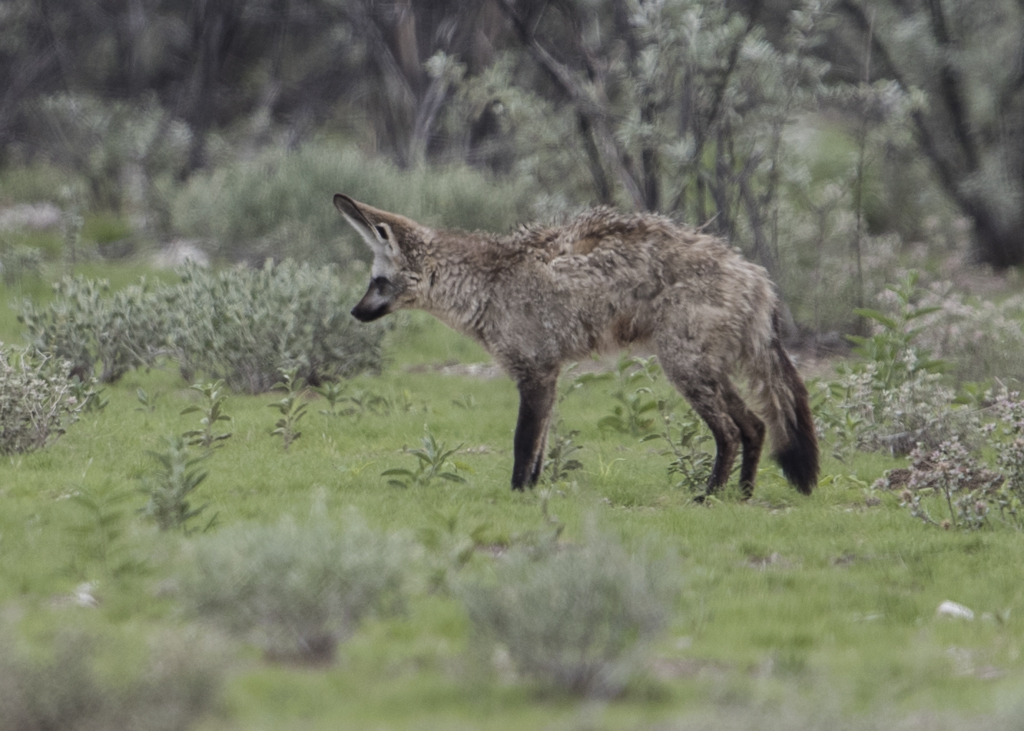
No mistaking Bat-eared Fox ! Before I could stick my 2x converter on my 600mm lens it had disappeared in to the thick undergrowth. It was another species we were to see just the once. Crazy start with two unexpected sightings!
Birdwise I was seeing a few new species like Crowned Lapwing.
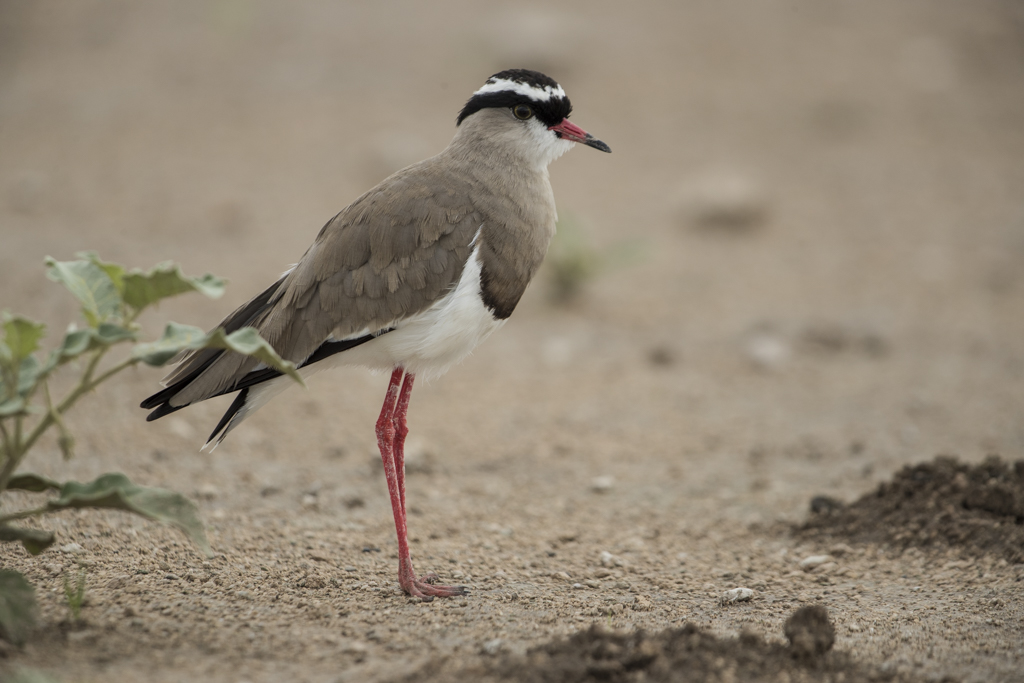
Cape Crow
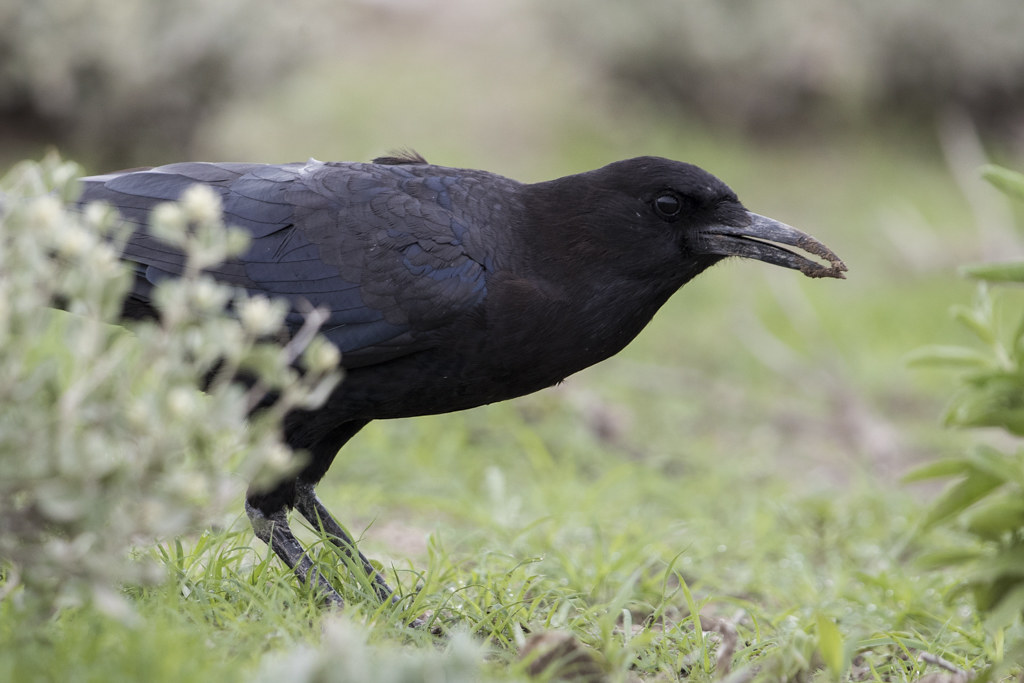
and Larks galore.
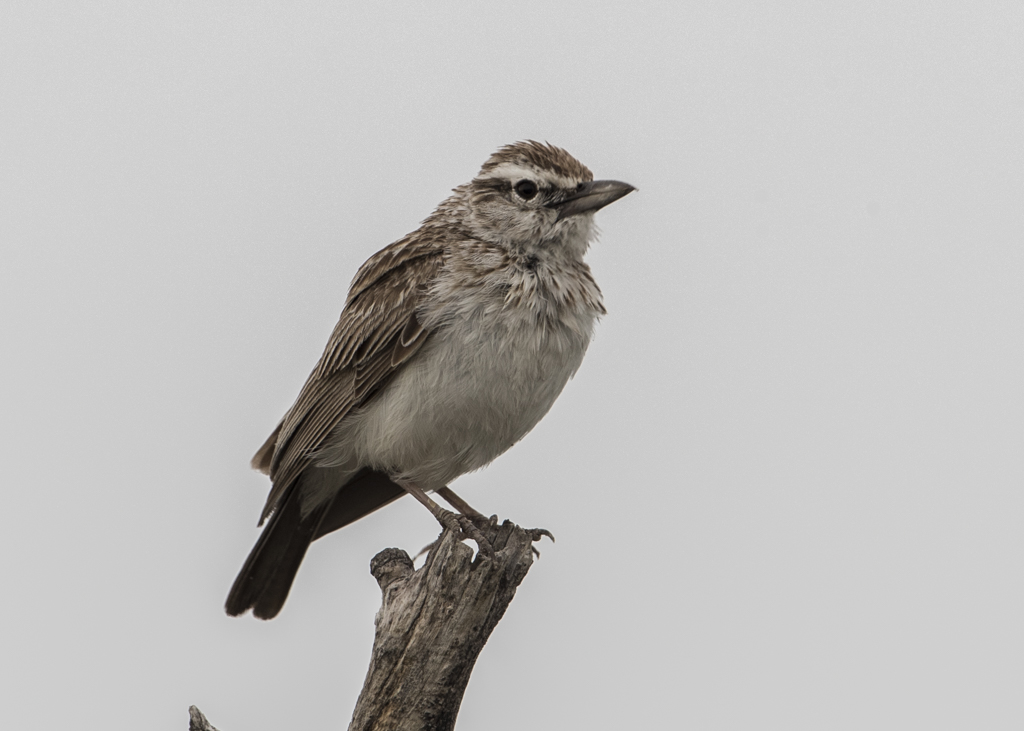
I'm always confused by those little brown jobs or L.B.J's as they are collectively known.
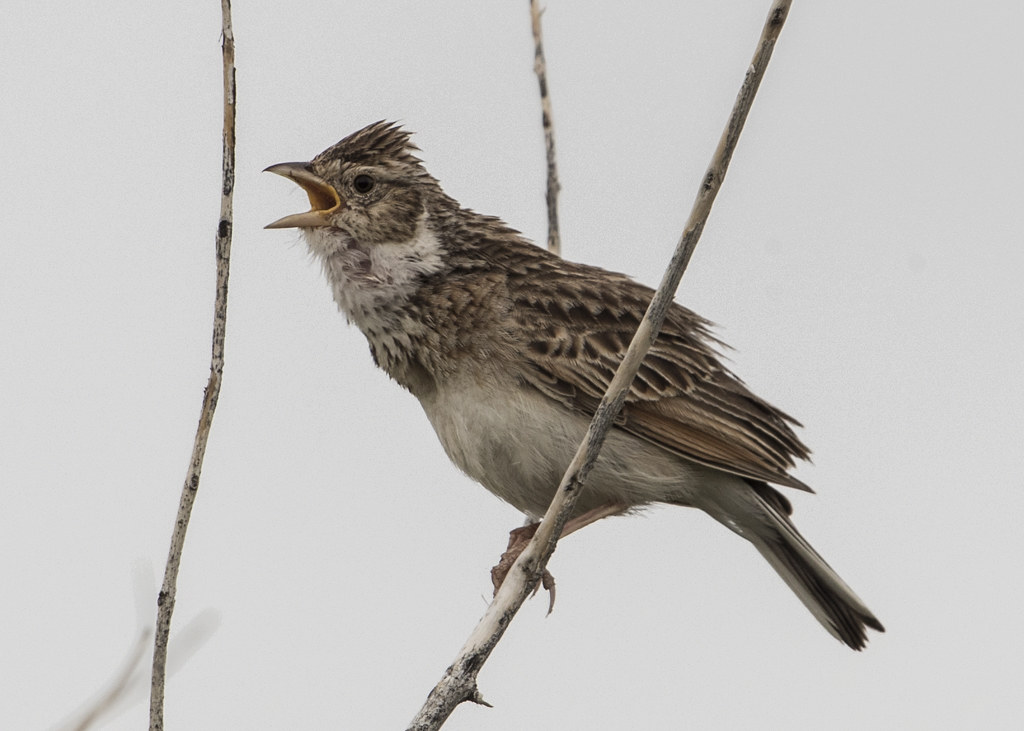
Depending on their pose they can look so different. I think those last two are probably one and the same, a Sabota Lark. Whatever, there were Larks all over the place!
The other really common species was the Lesser Grey Shrike.
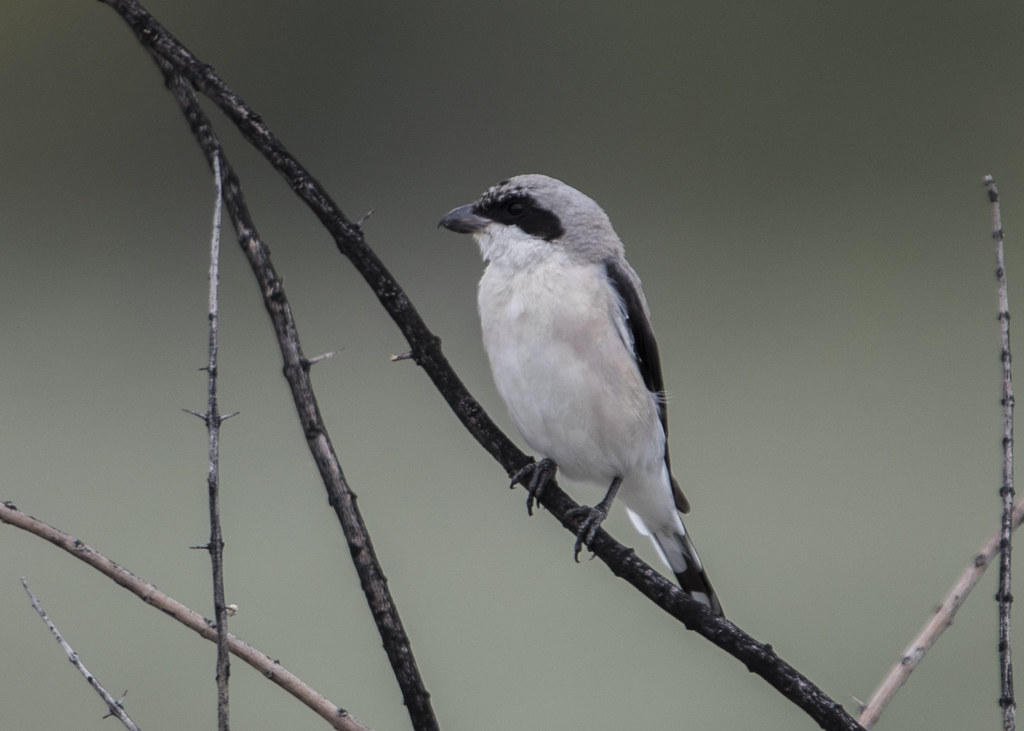
As with the Masked Weaver, unless the opportunity to photograph was really good you drive on by and as yet I haven't found a photograph better than this which hasn't turned out the best! They are incredibly flighty though and we soon got fed up of stopping the car only for the bird to immediately fly off.
One bird that appeared far more common than it actually was turned out to be the Northern Black Korhaan.
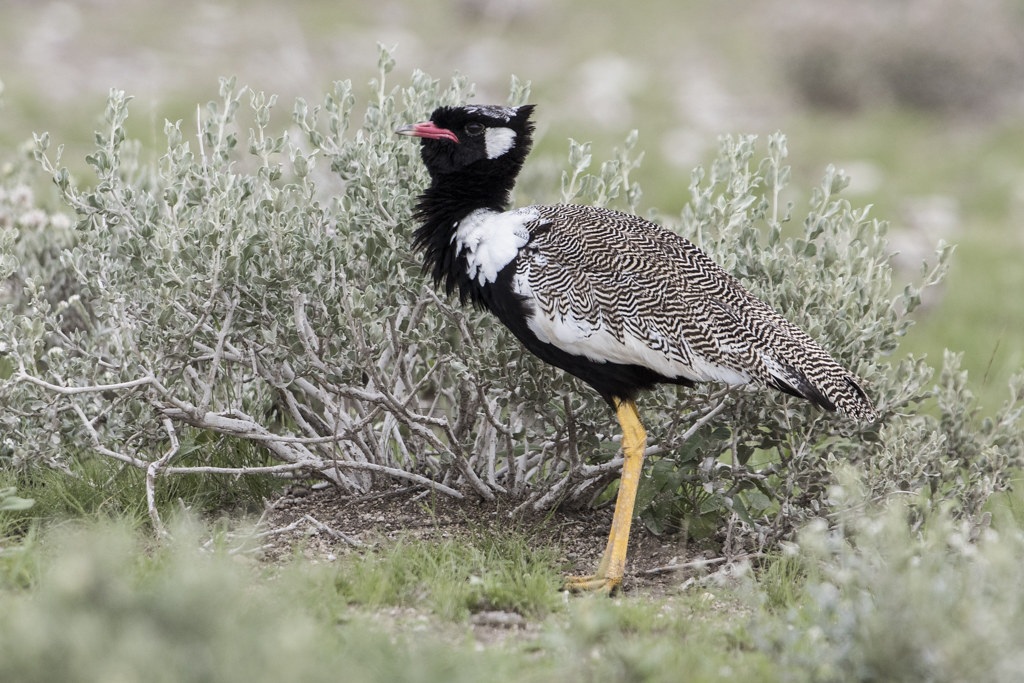
It's the noise they make that carries a long long way so you think they are everywhere!
Presumably trying to attract a mate !
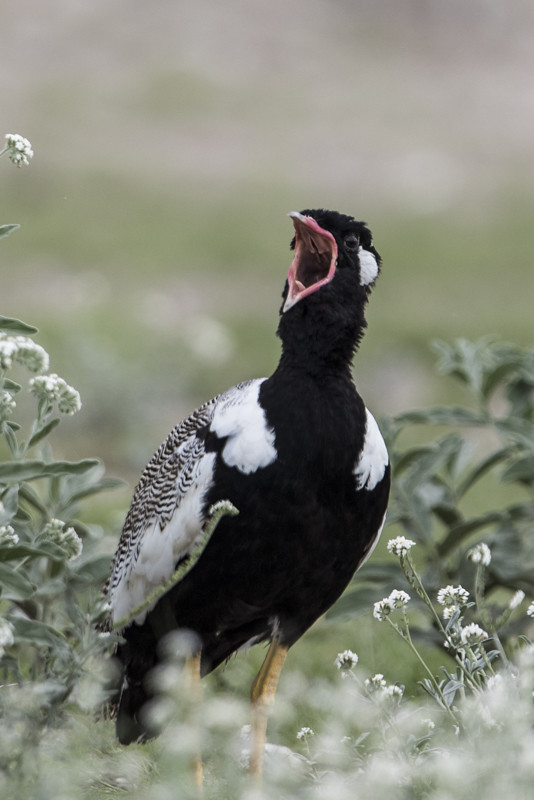
It seemed to work.
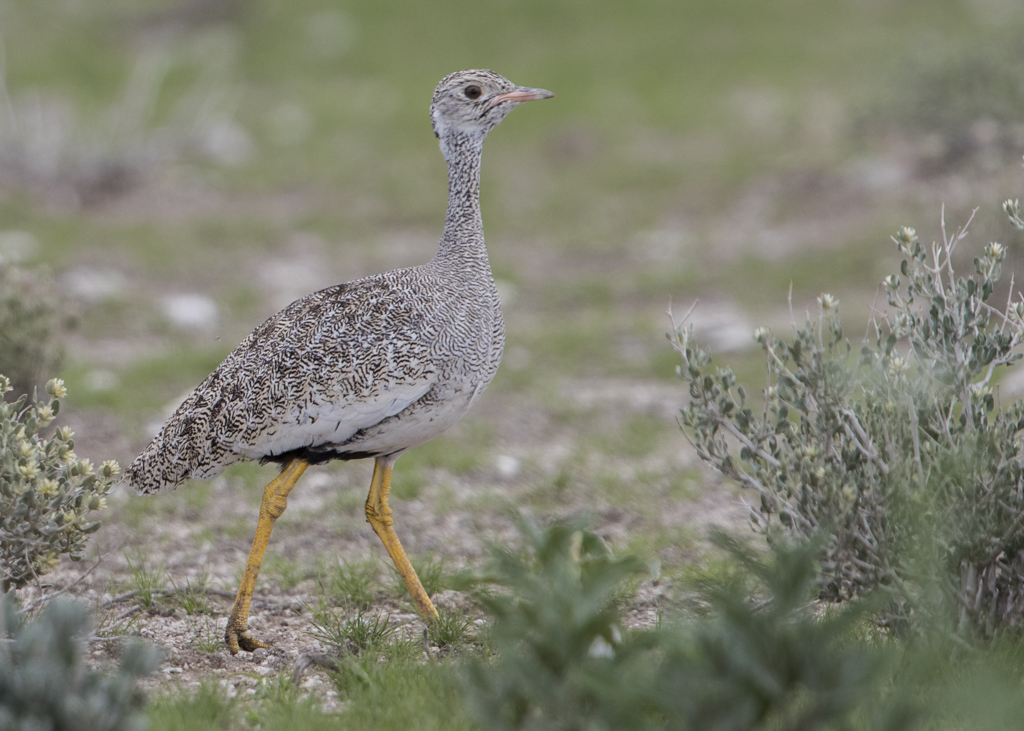
A stunning bird, I was delighted to see for the first time and they are very confiding so a photo wasn't too difficult.
With all theses new species to see and record it took us all morning to each the first waterhole.
After all, you realise you will see another Cape Glossy Starling but just in case get the shot while you can.
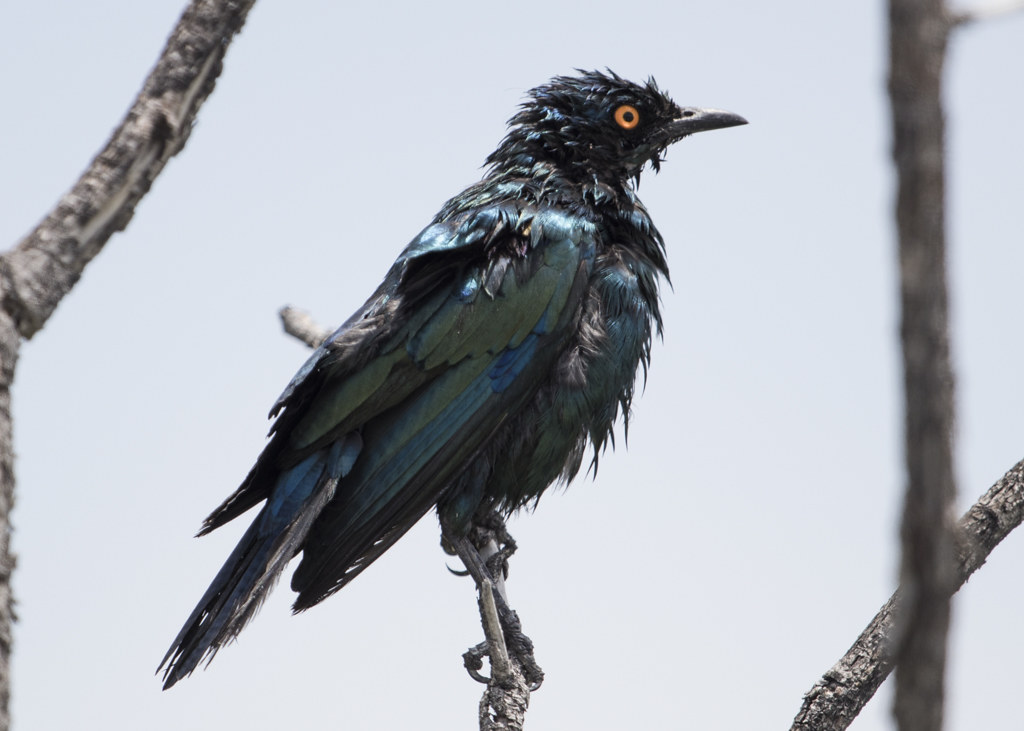
Even a species previously seen in another country might be rarer here so grab it while you can.
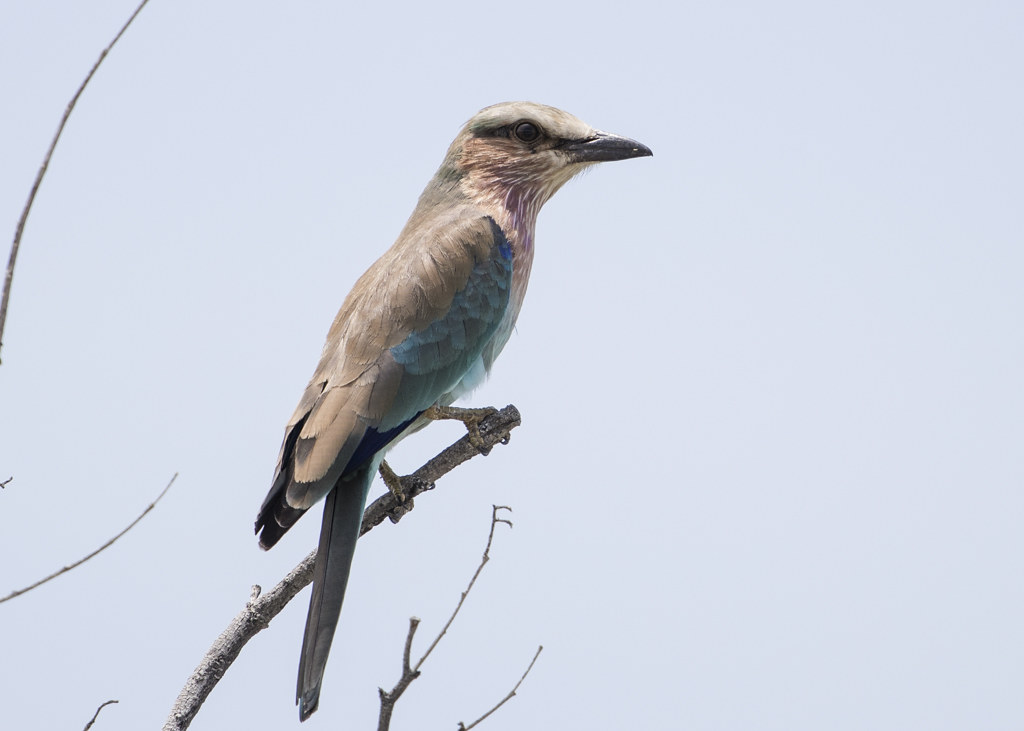
We hadn't seen too many mammals by this stage but I had at least taken my first shots of Oryx
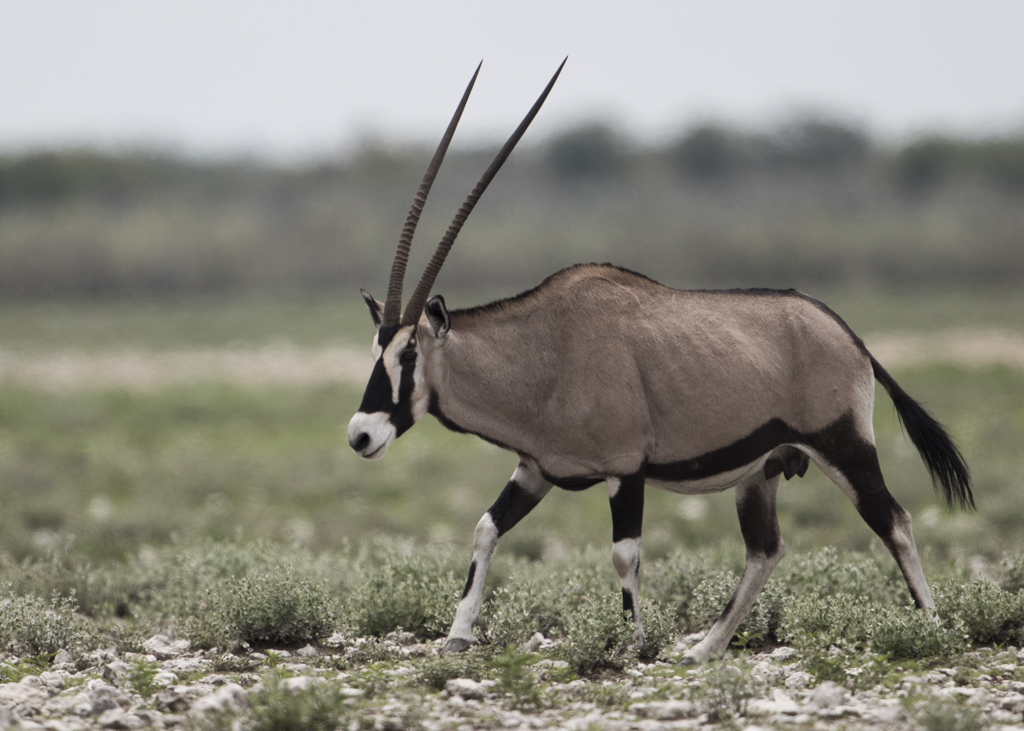
and Springbok
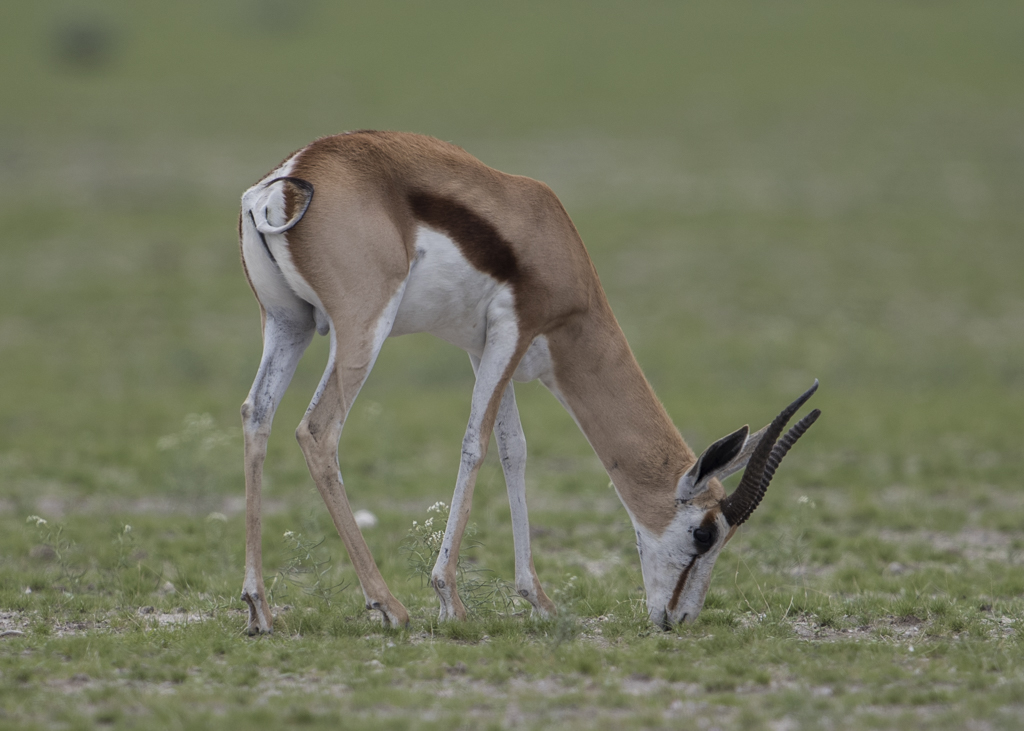
We somehow managed to miss that the waterhole we were heading for was a left turn and instead travelled another 8 kms to Olifantsbad Waterhole.
It was deserted by mammals but there were a dozen African Openbills lining along the waterhole.
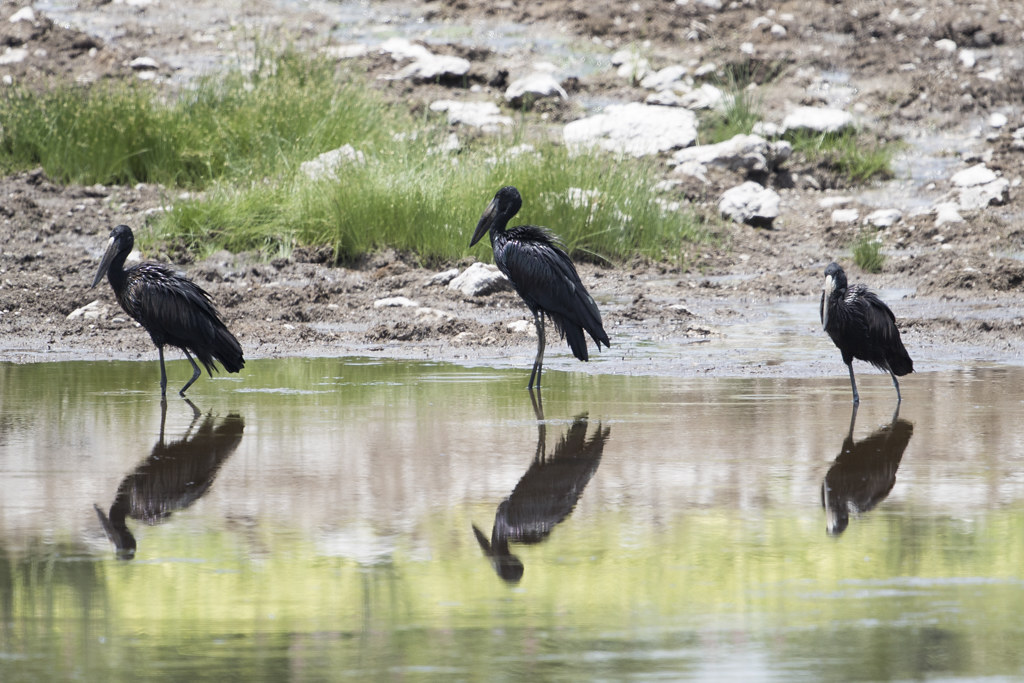
In the water some Little Grebes and a pair of Egyptian Geese.
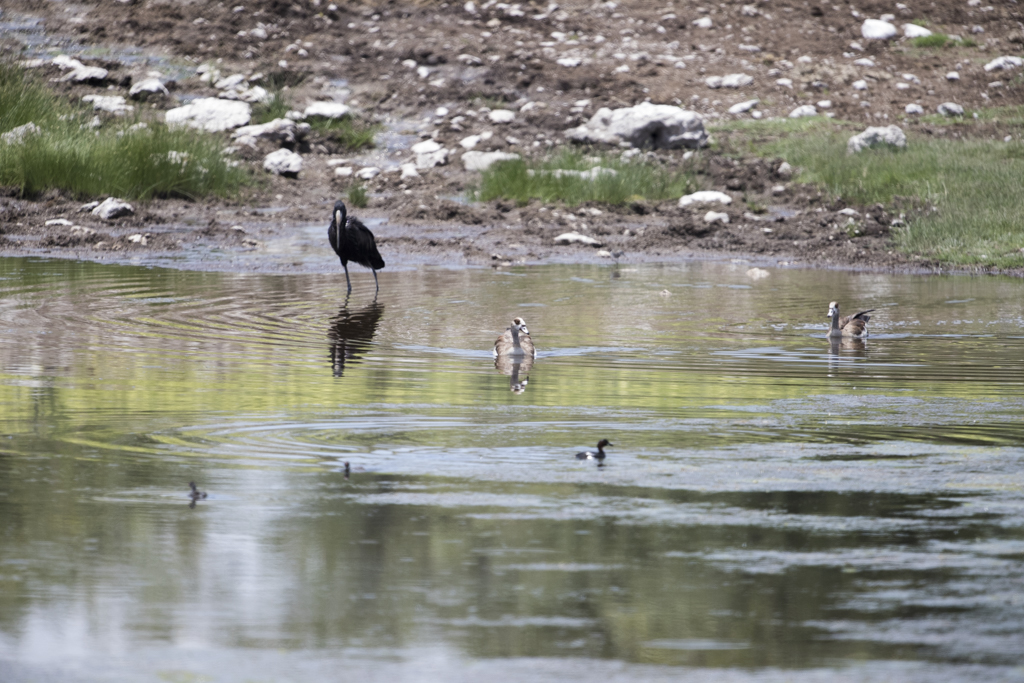
By now the sun had come out and it was very bright indeed. We continued on to Aus waterhole, yet another 8 kms further only to find that was deserted by mammals too.
A single bird was in the vicinity of the car park, I think it's an African Pipit.
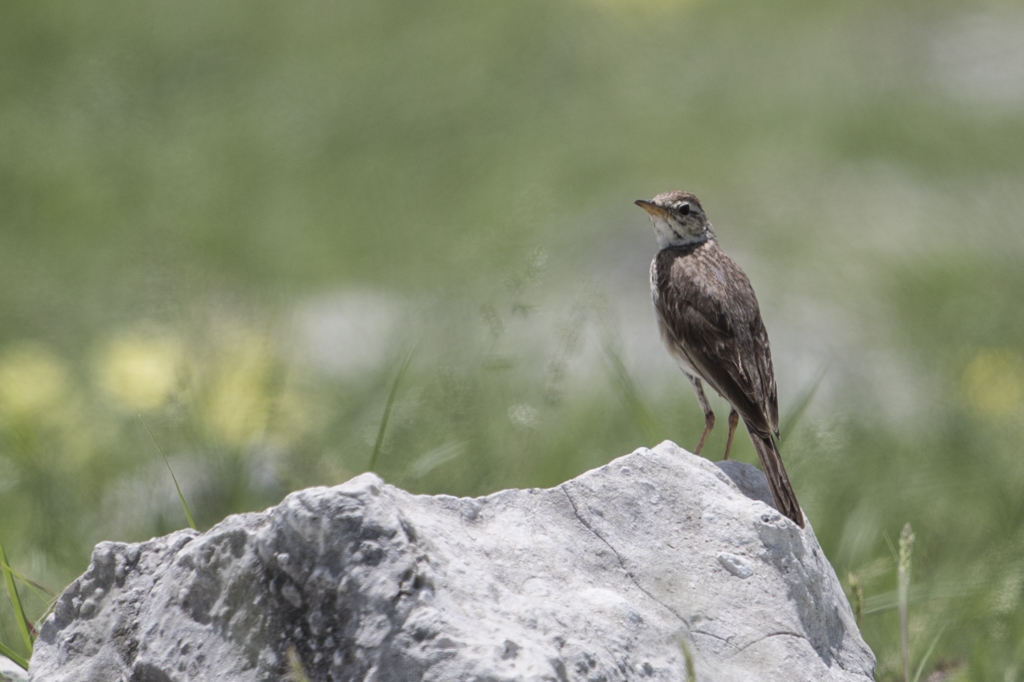
so after hanging around for 5 minutes we decided it was a lost cause and went to head north only to find the road was closed. That meant doubling back the 16 kms to Gemsbokvlakte. Not in the plan but we might see something on the way that wasn't there before. Wildlife doesn't stay still !
Sure enough we had some good views of a pair of Double-banded Sandgrouse.
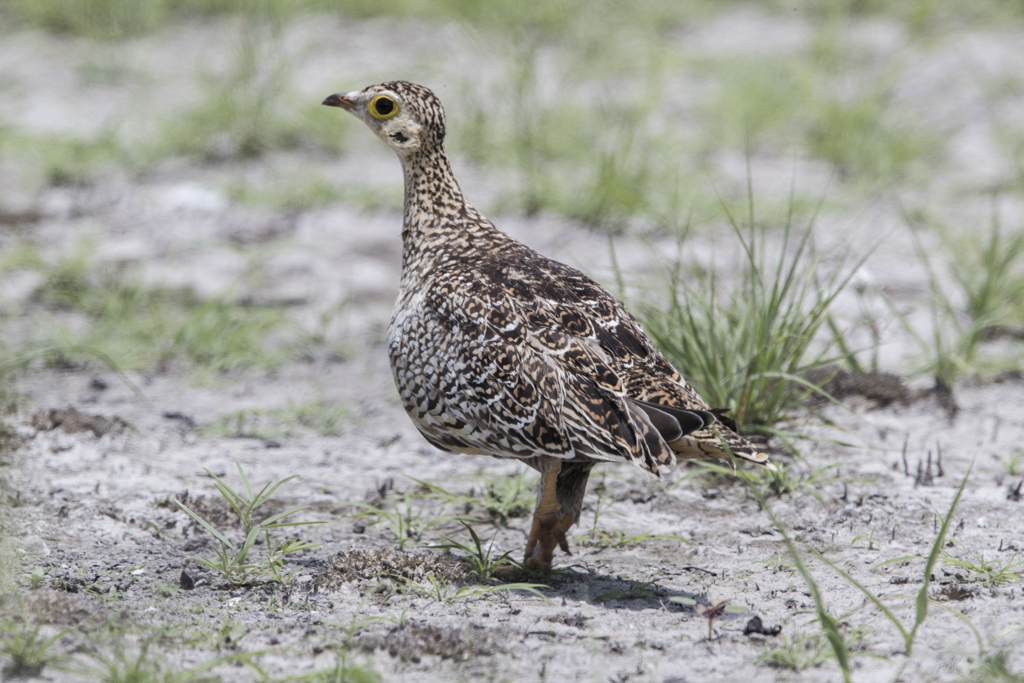
The male being the one showing the bands.
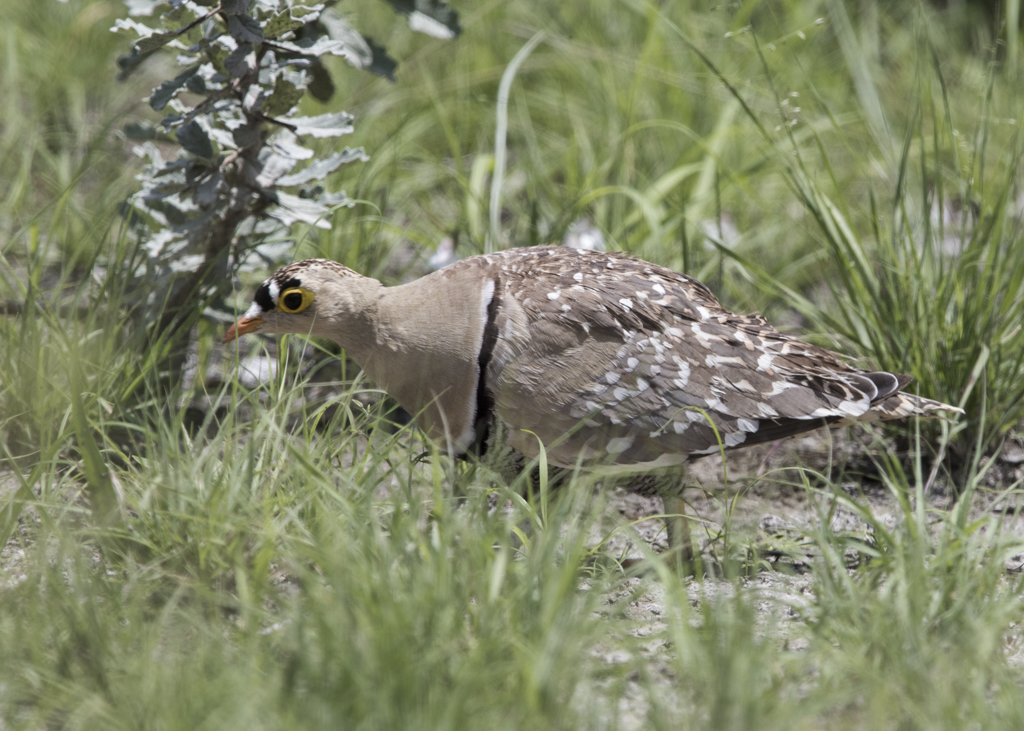
We also came across this one.
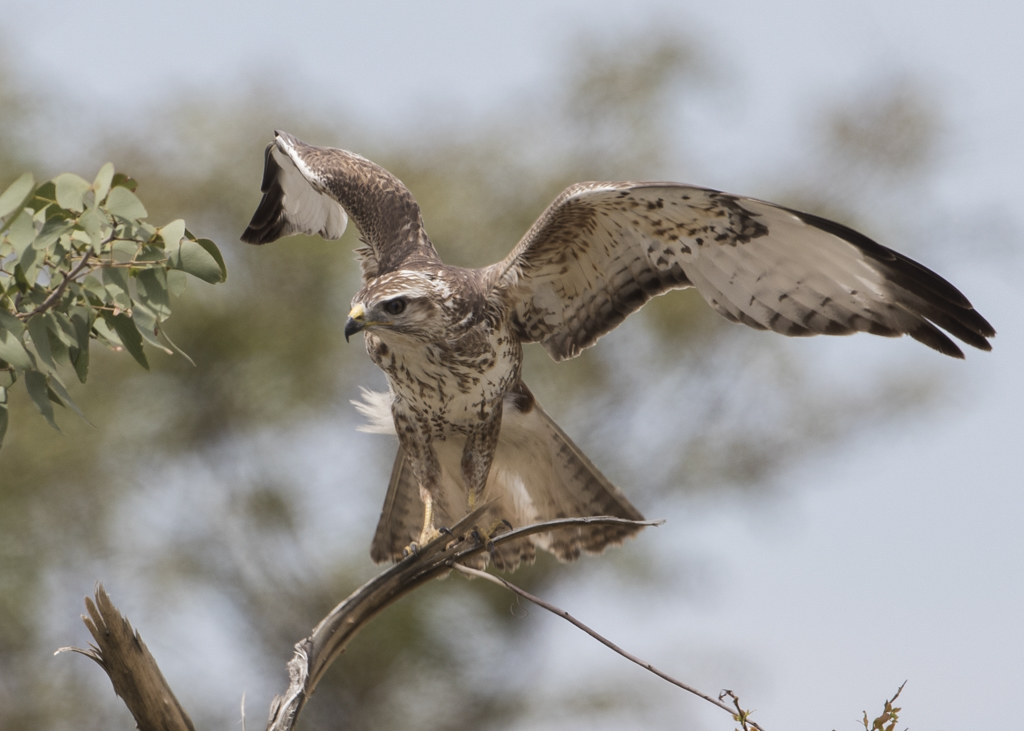
It looks most like a Forest Buzzard to me but as that doesn't occur in Namibia it could be something else. A Jackal Buzzard perhaps?
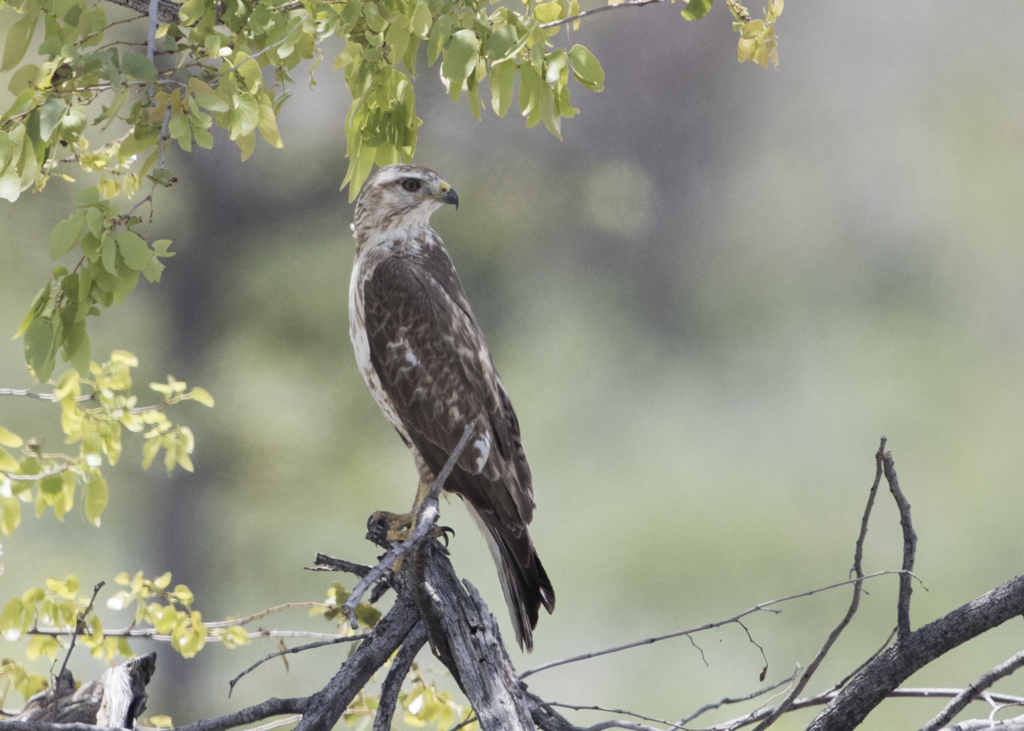
Opinions very welcome!
Anyway, we found our way back to the waterhole we had originally intended and were delighted to find quite a lot of animals there.
one or two Black-faced Impala
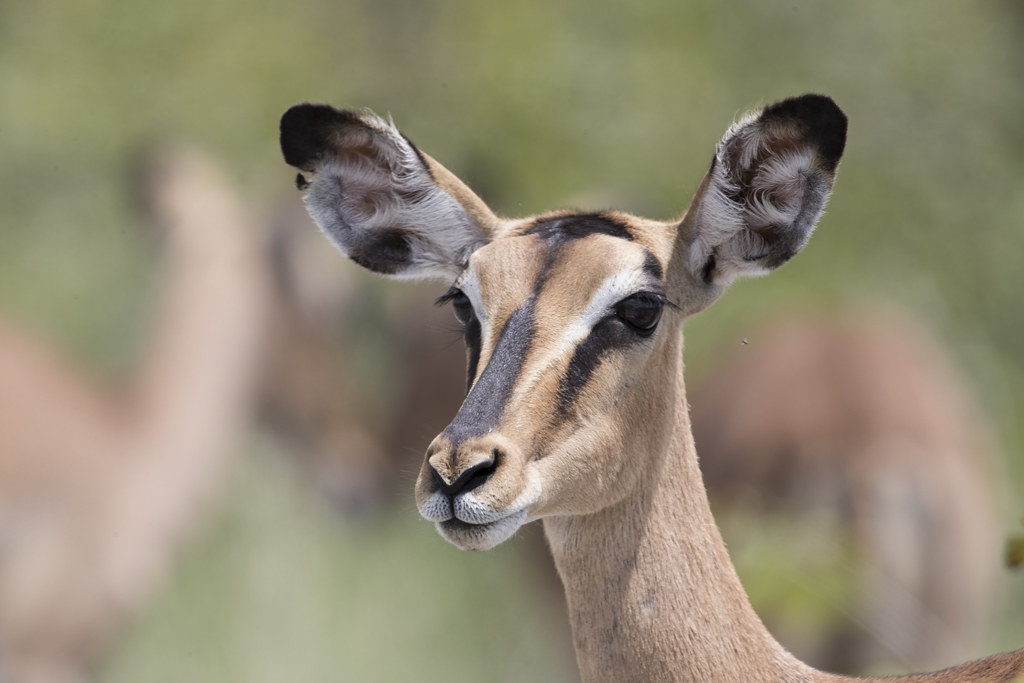
but mainly Springbok
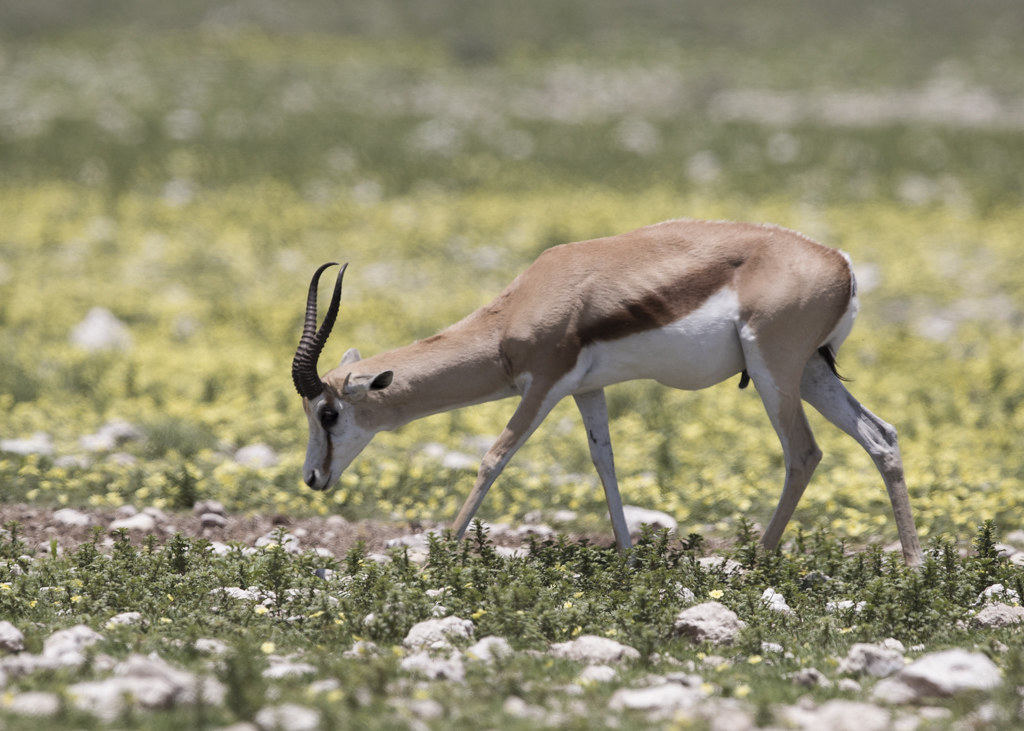
By now the heat was quite intense and it was effecting my photographs with the haze distorting the image unless the subject was very close.
Due to the rain the water hole wasn't the only place to drink, there was a large puddle in the car park.
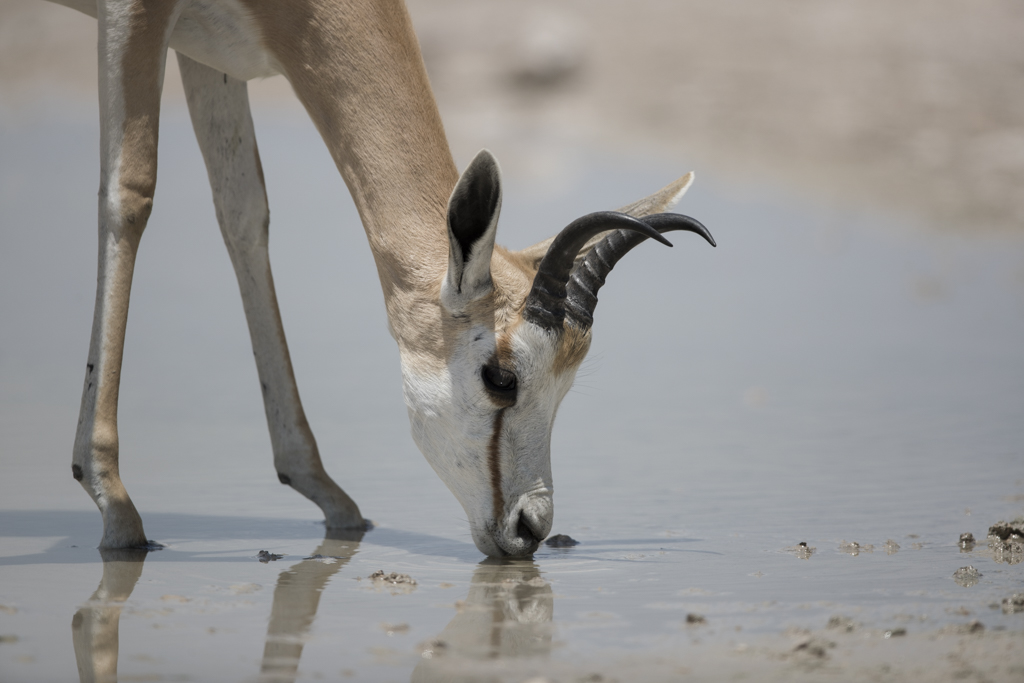
So the Springbok were very close indeed.!
So too were some small waders which I hadn't noticed on arriving as they are well camouflaged.
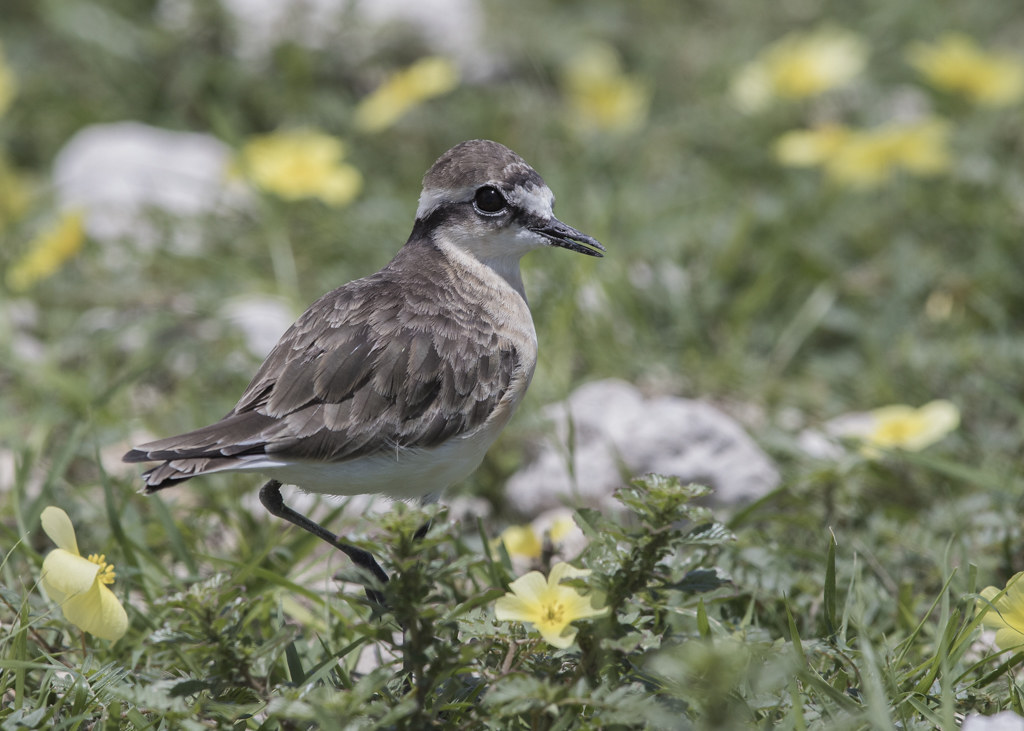
Kittlitz's Plover, yet another to add to my life list!
Moving on again we found some Common Ostrich
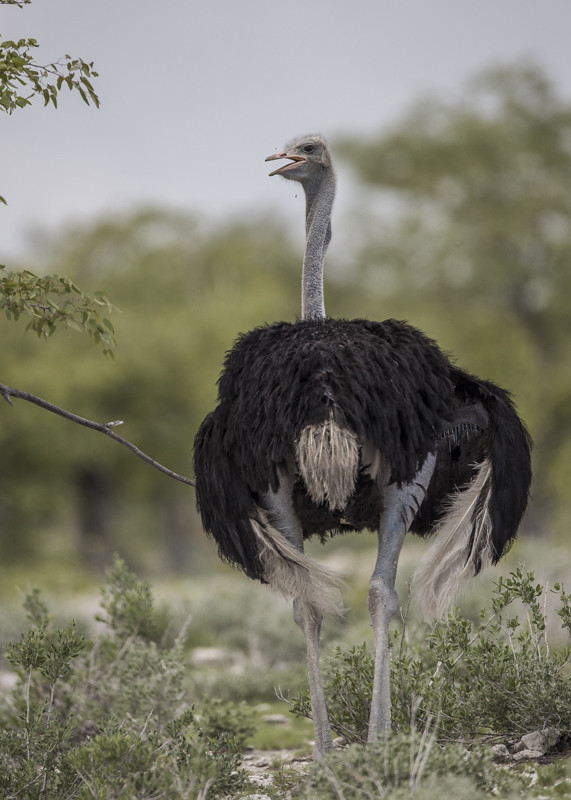
Greater Kestrel
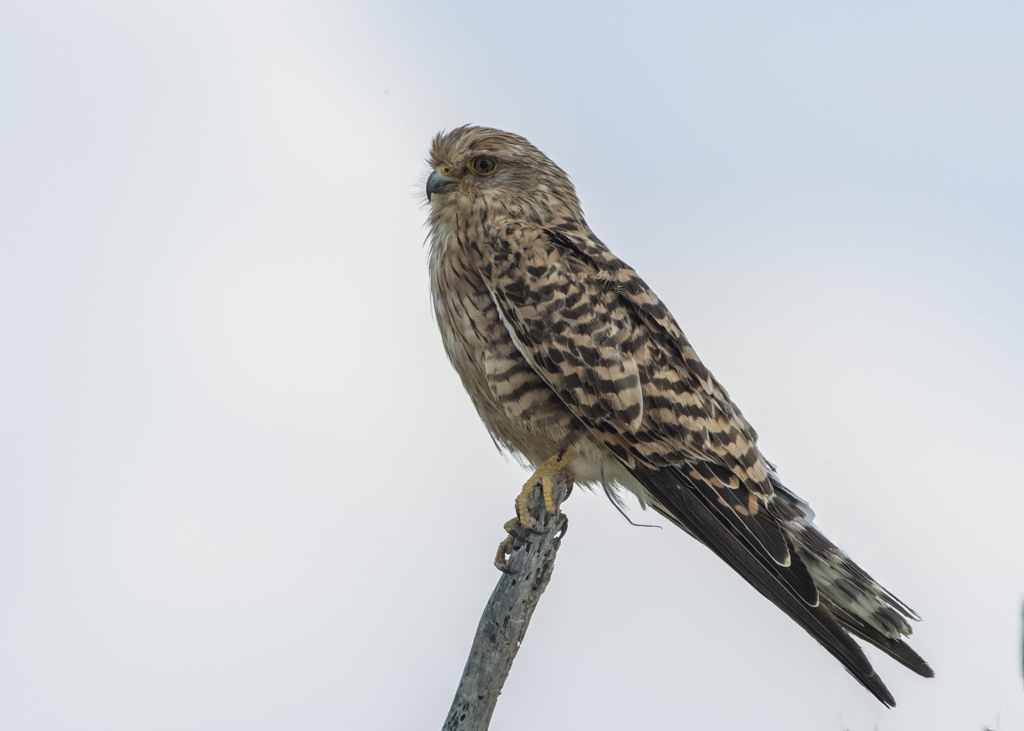
My first ever Blue Wildebeest
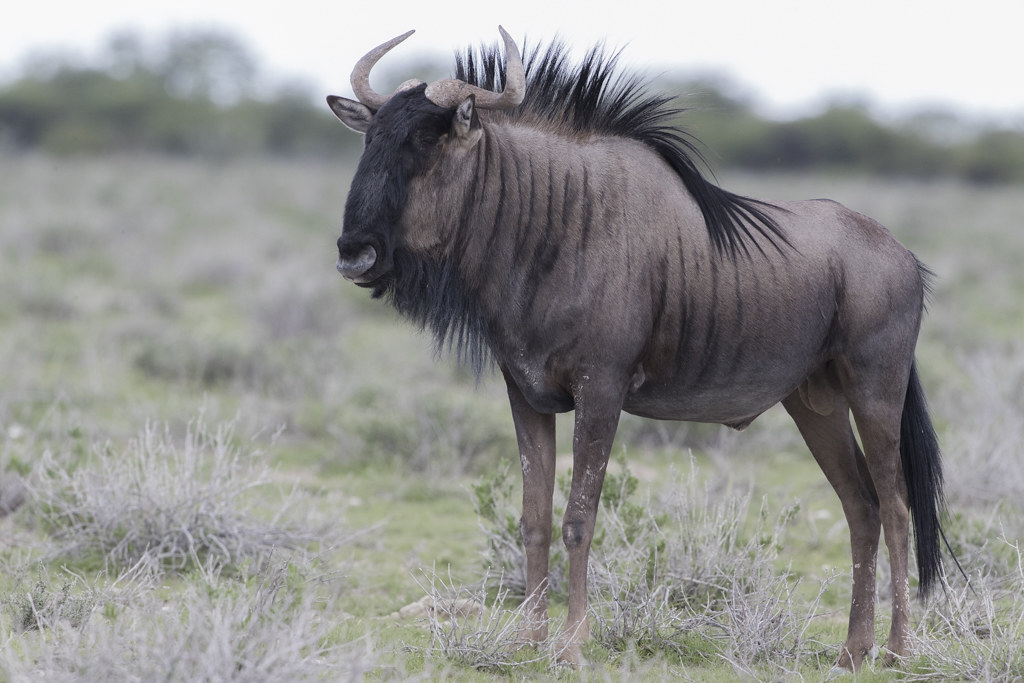
Common Zebra
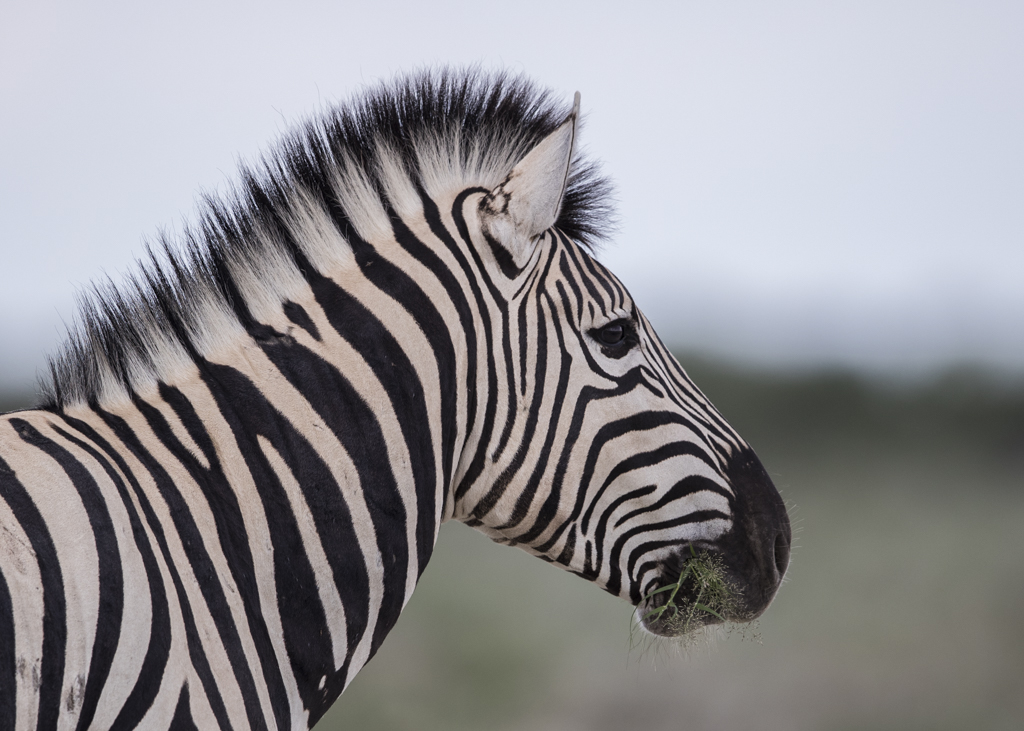
and some better views of the Korhaan.
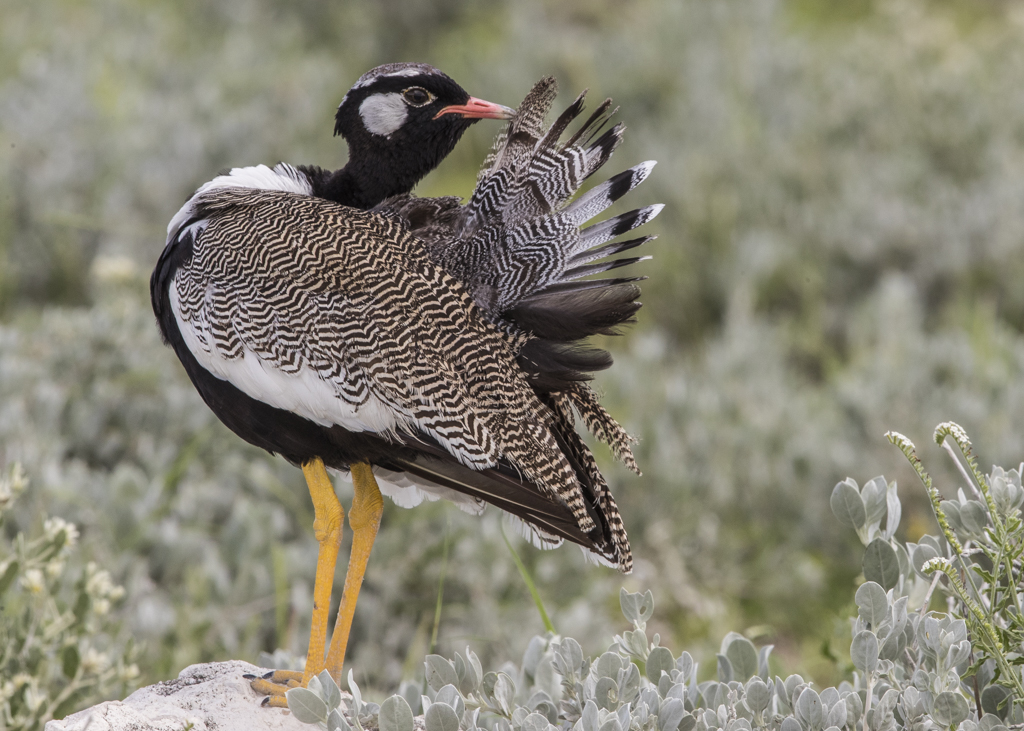
After some distance we found the turnoff for Nebrowni waterhole and that too had a fair few Springbok in attendance.
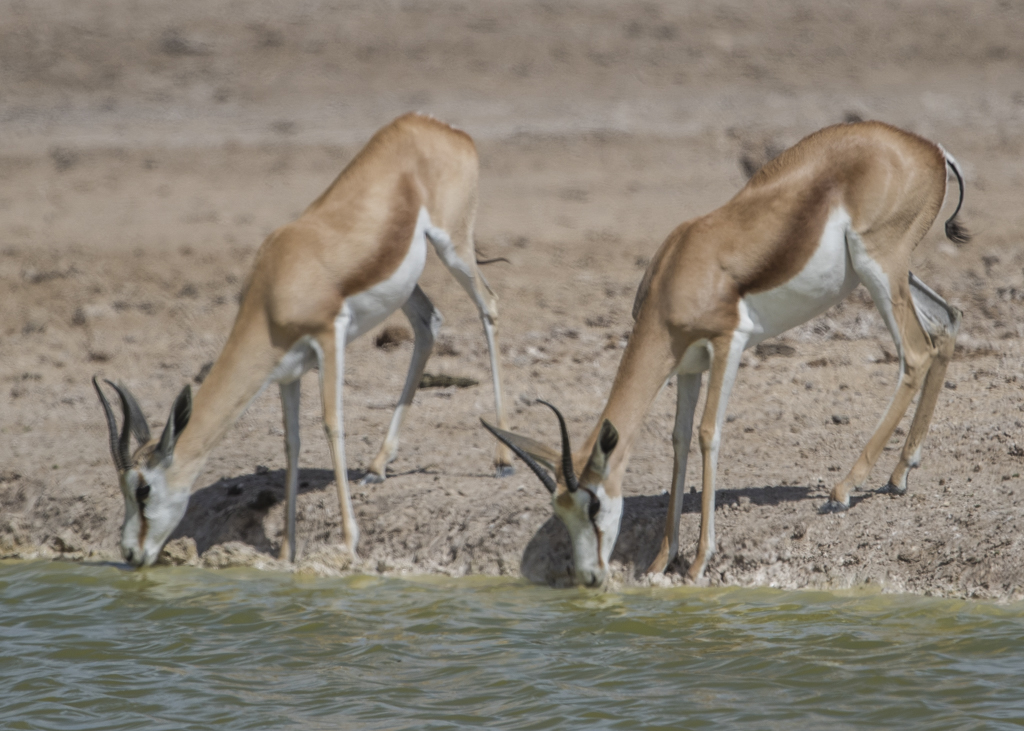
and more Zebra.
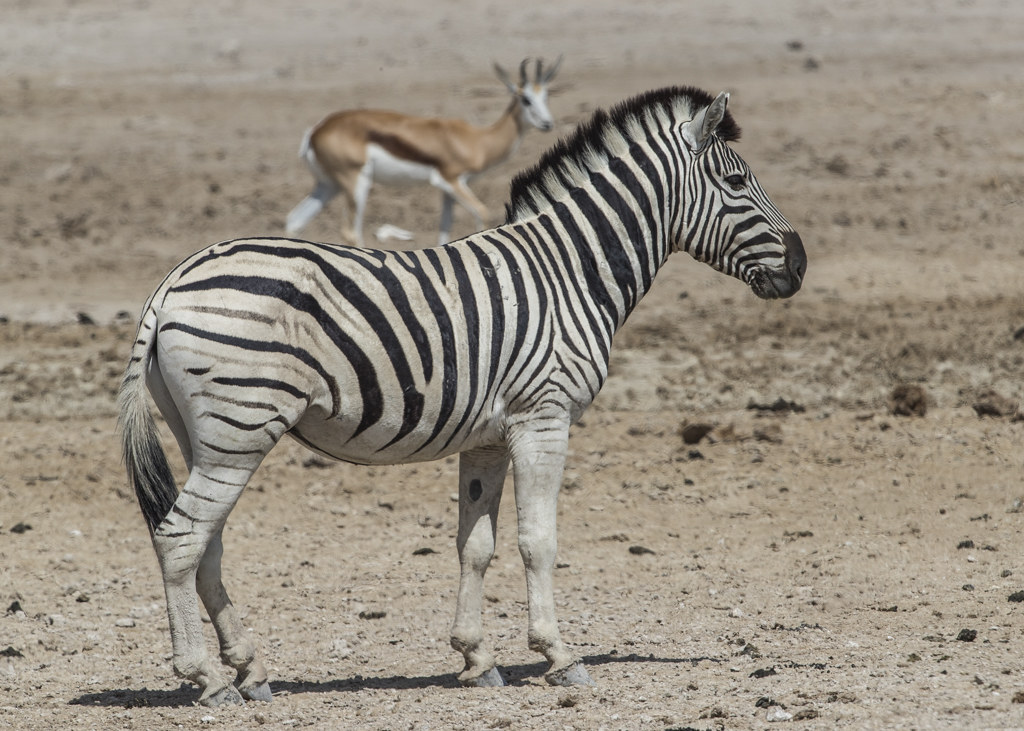
but best of all was this Blue Crane which I had read was there in someone else's blog from December.
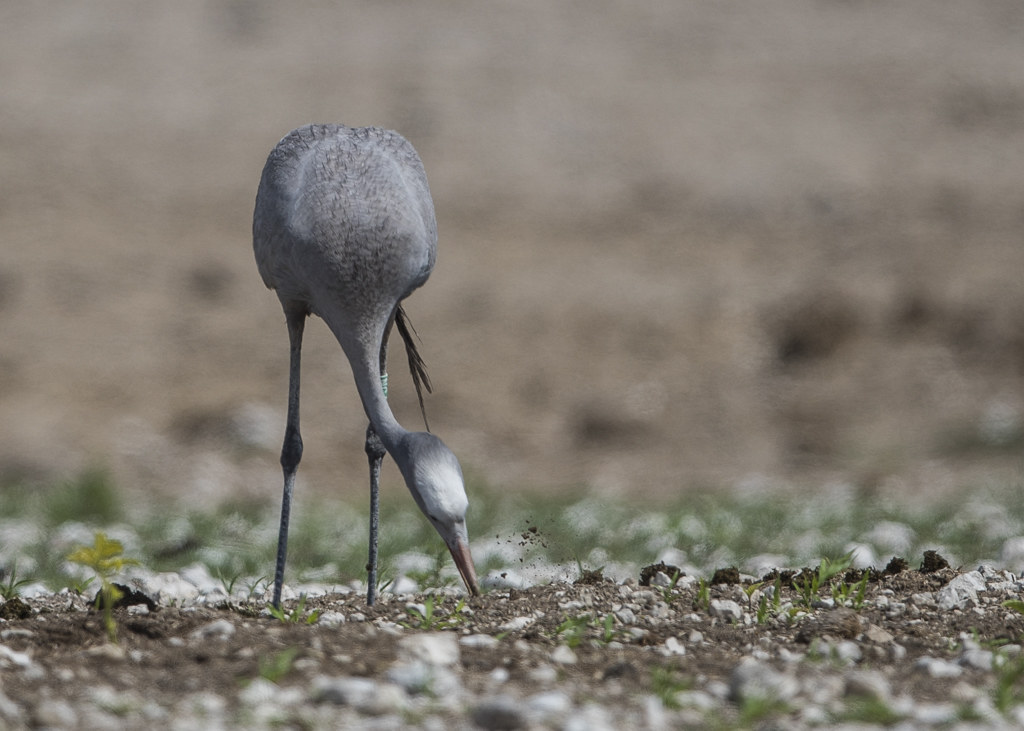
It was mid afternoon by now so we headed to the camp to pay our fees. The daily rate is a mere 80NR pp plus 10 for the car. Just 170 in total or a fraction more than £10 per day for the two of us.
Whilst I was in the camp I decided to check the visitor log for sightings and I must say, what a disappointment. A total waste of time in fact and such a shame. Instead of meaningful notes the book is full of childlike scribbles and comments like "I love Etosha". Never mind! I had my tips and I'll come on to that later!
I offered to take Claire back to Etosha Village but she suggested it was too late to take in the sun now so I suggested we headed towards Okondeka Waterhole and she agreed. More driving and not too much along the way but we did stop for some shots of Ant-eating Chat that were posing nicely.
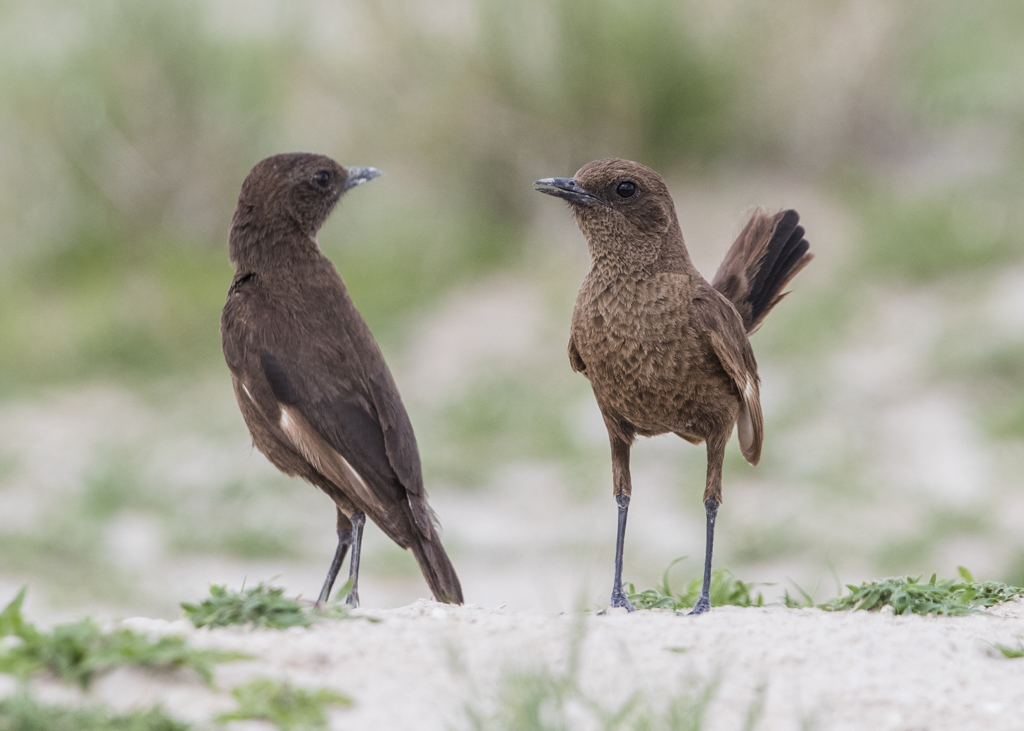
Okondeka proved to be deserted save for these two Shellduck
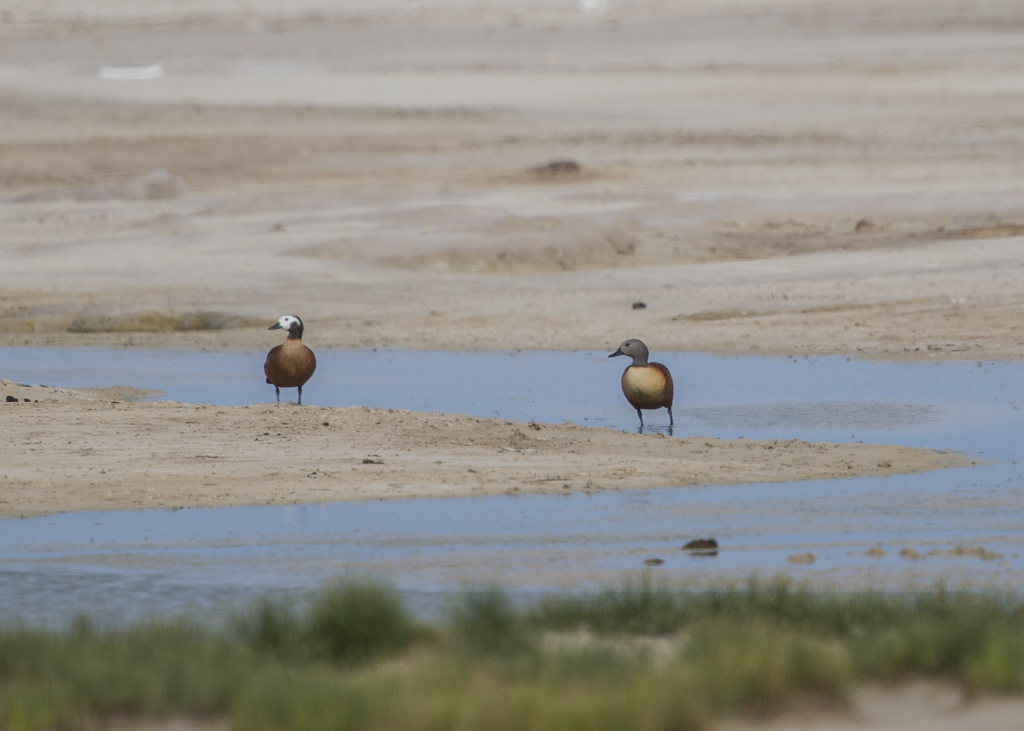
but the return journey was more fruitful when we spied this Tawny Eagle sitting on top of a small tree.
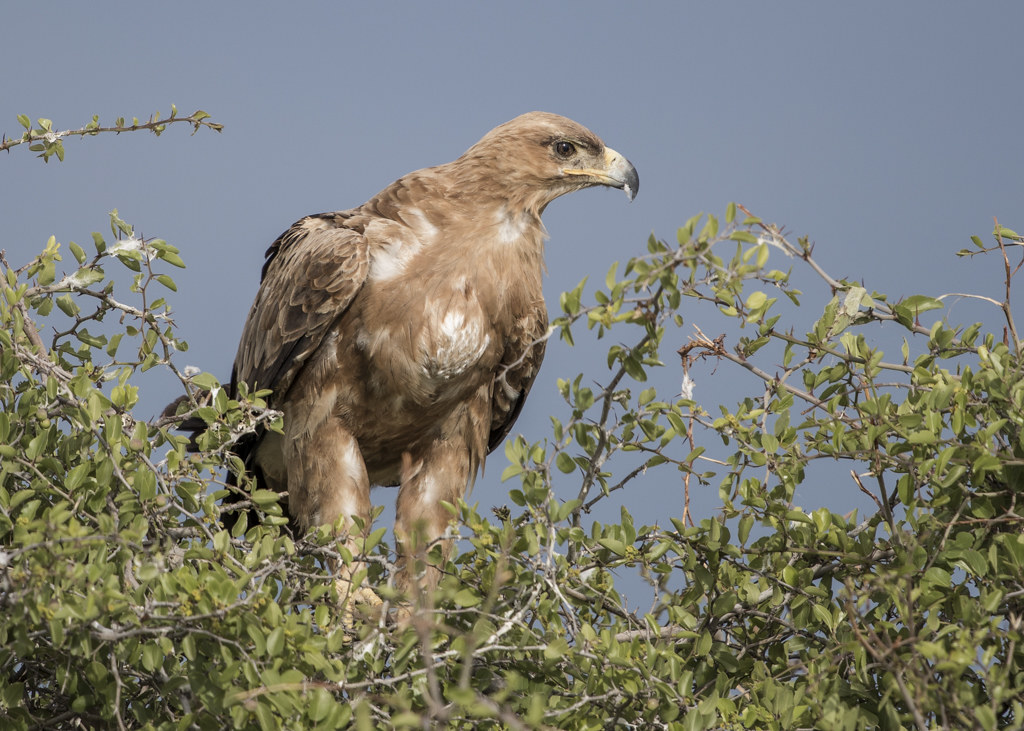
It posed nicely as did a Common Fiscal.
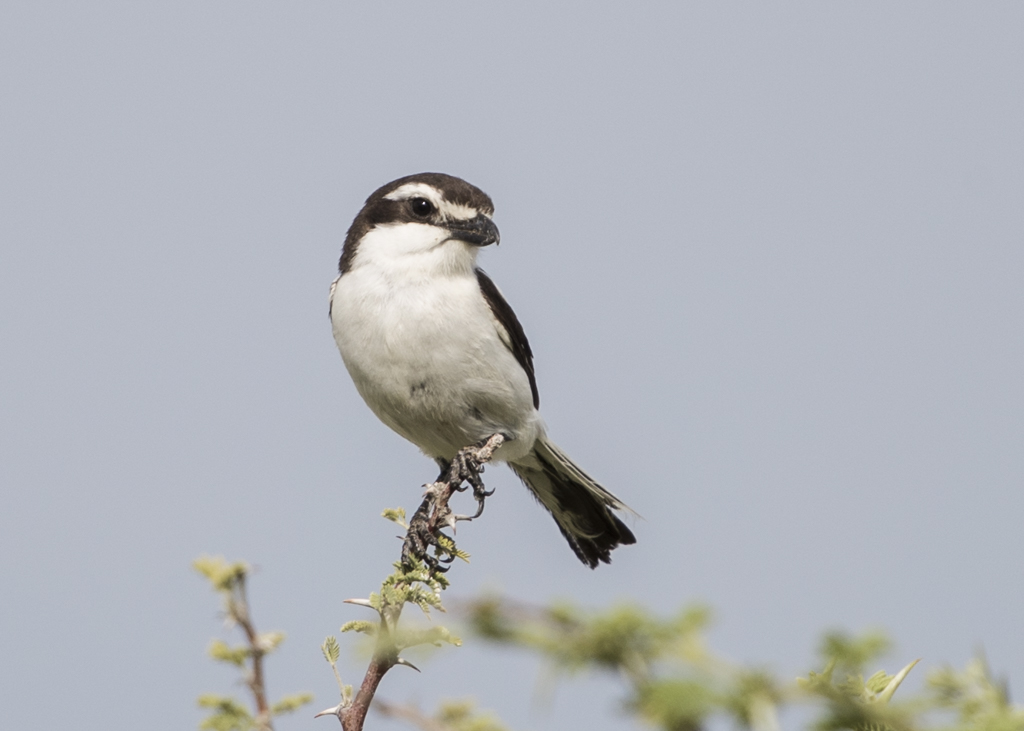
albeit briefly.
I strained to lean out of the window to get a fly past Lappet-faced Vulture.
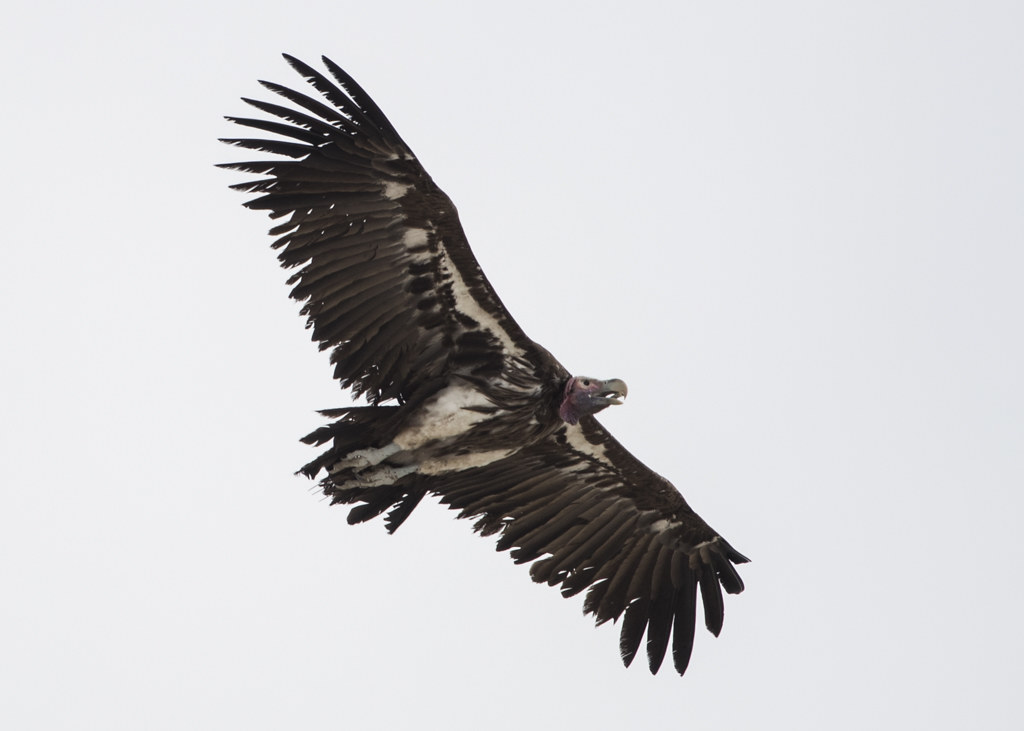
You are not of course allowed to get out of the car in the park but I wasn't going to miss that opportunity.
Best of all though was on the return from nipping down to the Wolfnes waterhole we spotted a second Mongoose species.
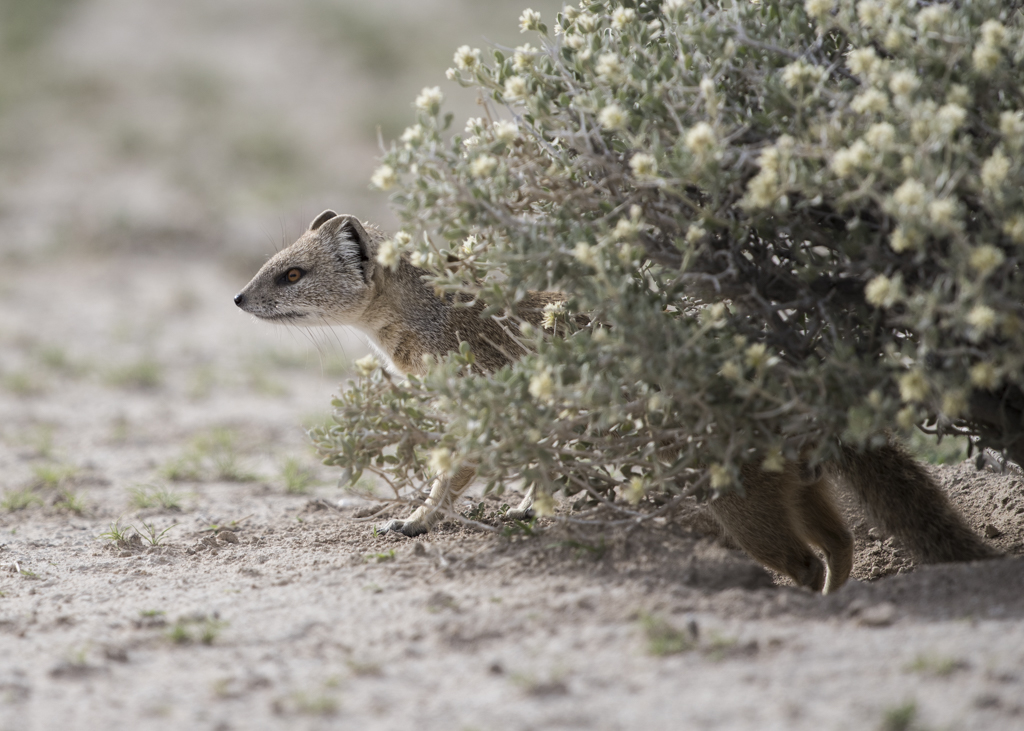
Emerging from it's burrow perhaps, Yellow Mongoose.
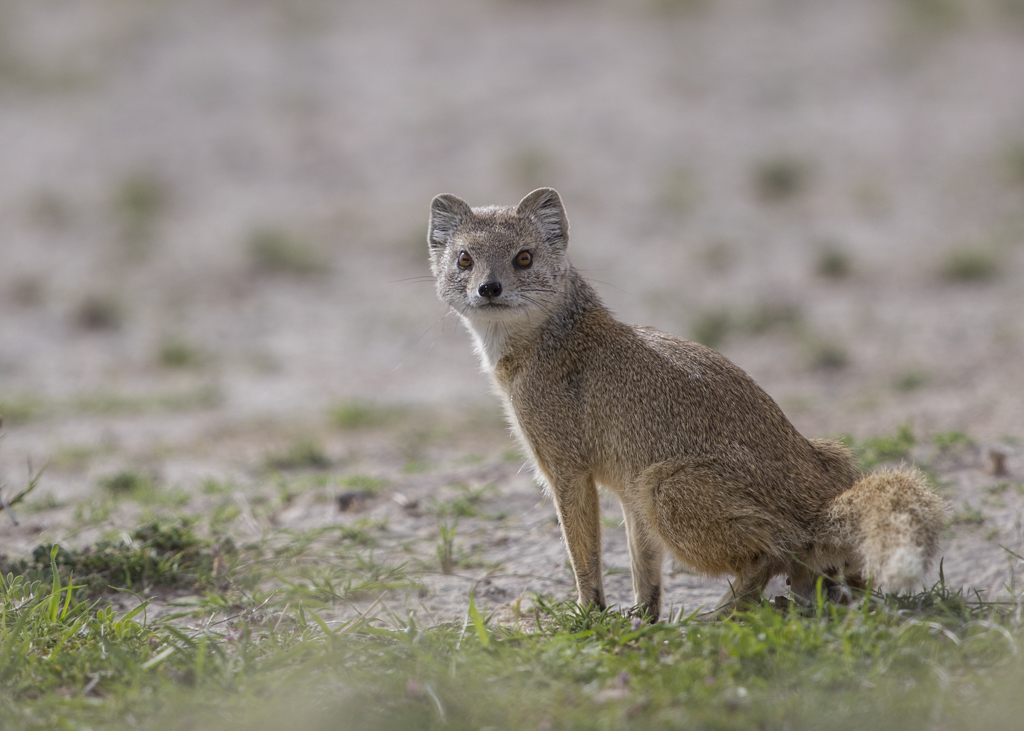
A bit of a stunner to look at too and well worth the diversion.
Time was getting on though, I'd subjected Claire to a very full day of wildlife watching and so it was time to return to our accommodation.
There was just one last stop though, as we headed down the tar road to the Anderson Gate we spotted a pack of our third Mongoose species of the day.
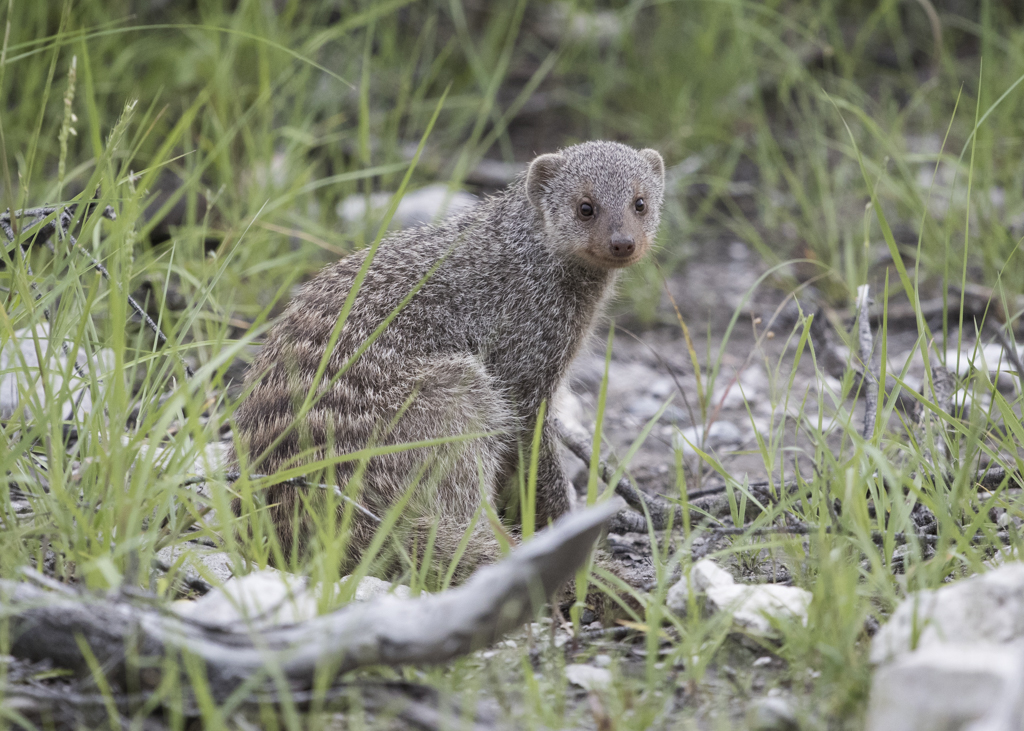
They had crossed the road in front of us and were all fairly close to the roadside. There were at least a dozen and their behaviour was fascinating.
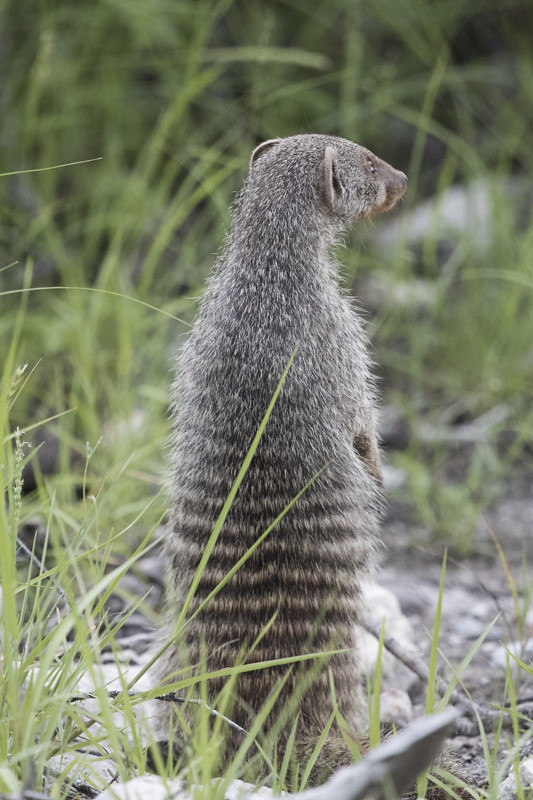
Standing on handles to get a view of what was going on you could clearly see why they are called Banded Mongoose.
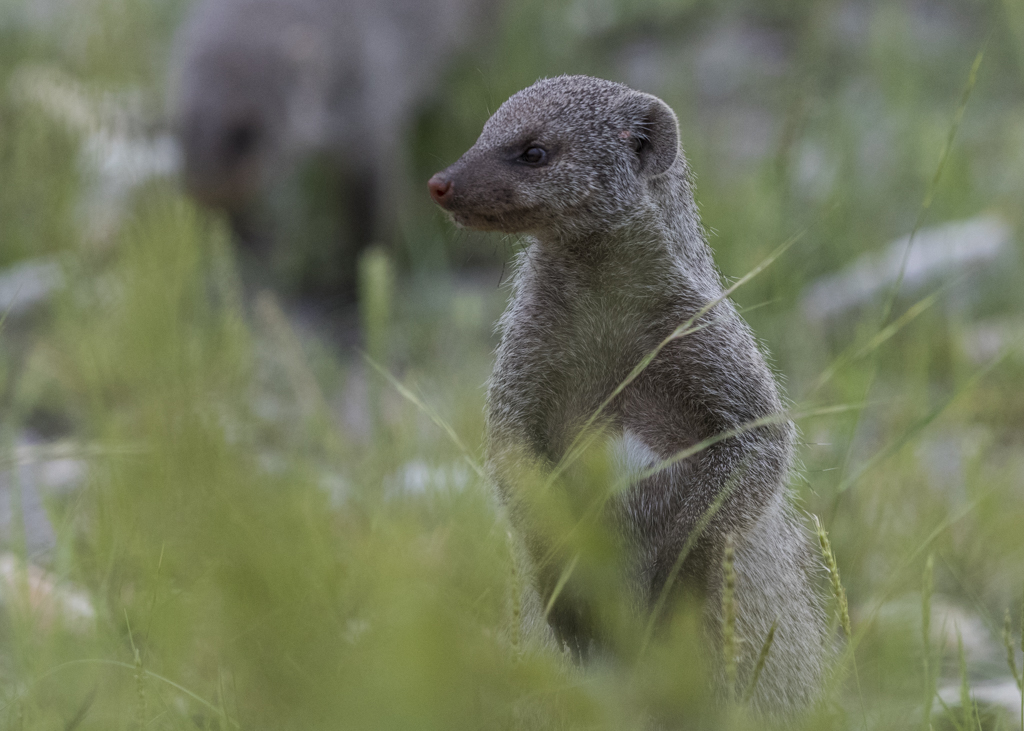
Anyway, something they saw made them head back in our direction as they re-crossed the road and disappeared once more.
A great way to end the day though as we headed home for showers, beers and dinner !
All in all we had covered 150+ kms just driving from waterhole to waterhole. We had seen some glorious sunshine and suffered in the heat at time too. Claire had been very supportive although she must have got a bit fed up in the end as we must have been in the park and on the go for 10 hours .
Me ?
I was as happy as the proverbial pig ! Bring on tomorrow!
T.B.C.
No comments:
Post a Comment